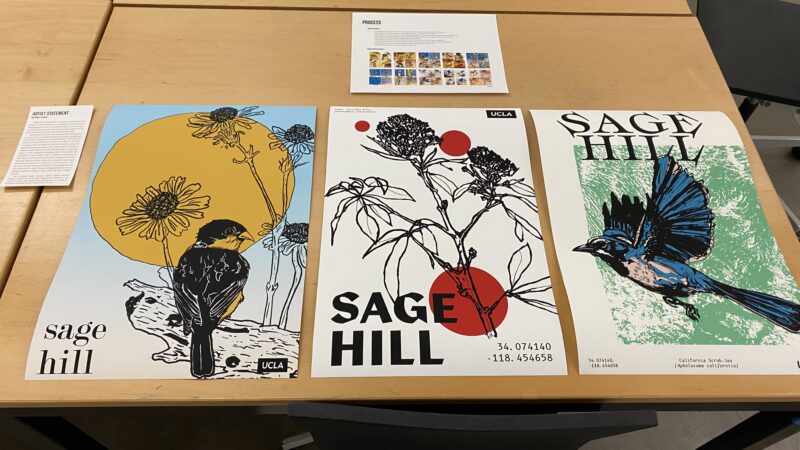In Fall 2022, UCLA students in Erin Cooney’s Design Media Arts (DESMA-173) created design and art inspired by the native plants and environment of Sage Hill. These place-based works showcase the textures, colors, sounds and smells of Sage Hill and call attention to its history and value for UCLA undergrads. The students’ work and artists’ statements are shared below (excerpted from the original course website).
In Conversation with Sage Hill
— a photojournalist book project, by Sabrina Chang, Eun Seo Kang, and Christine Kao


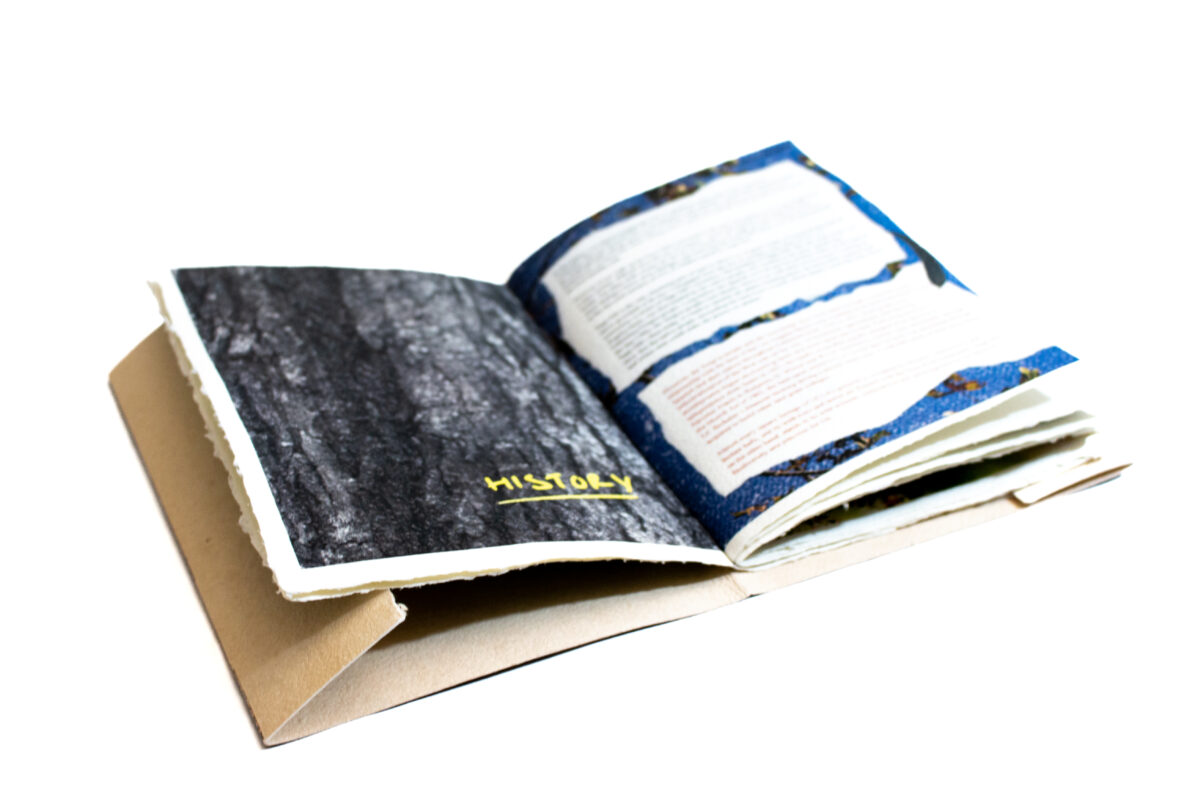

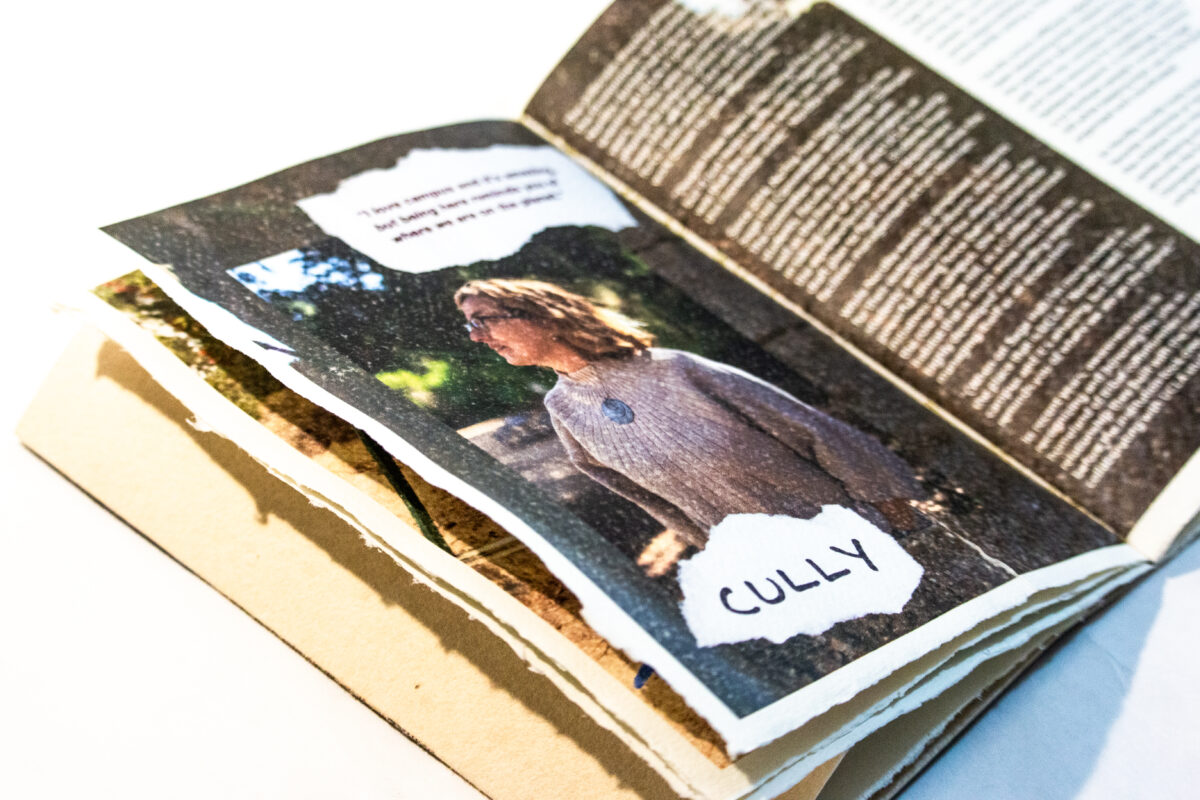
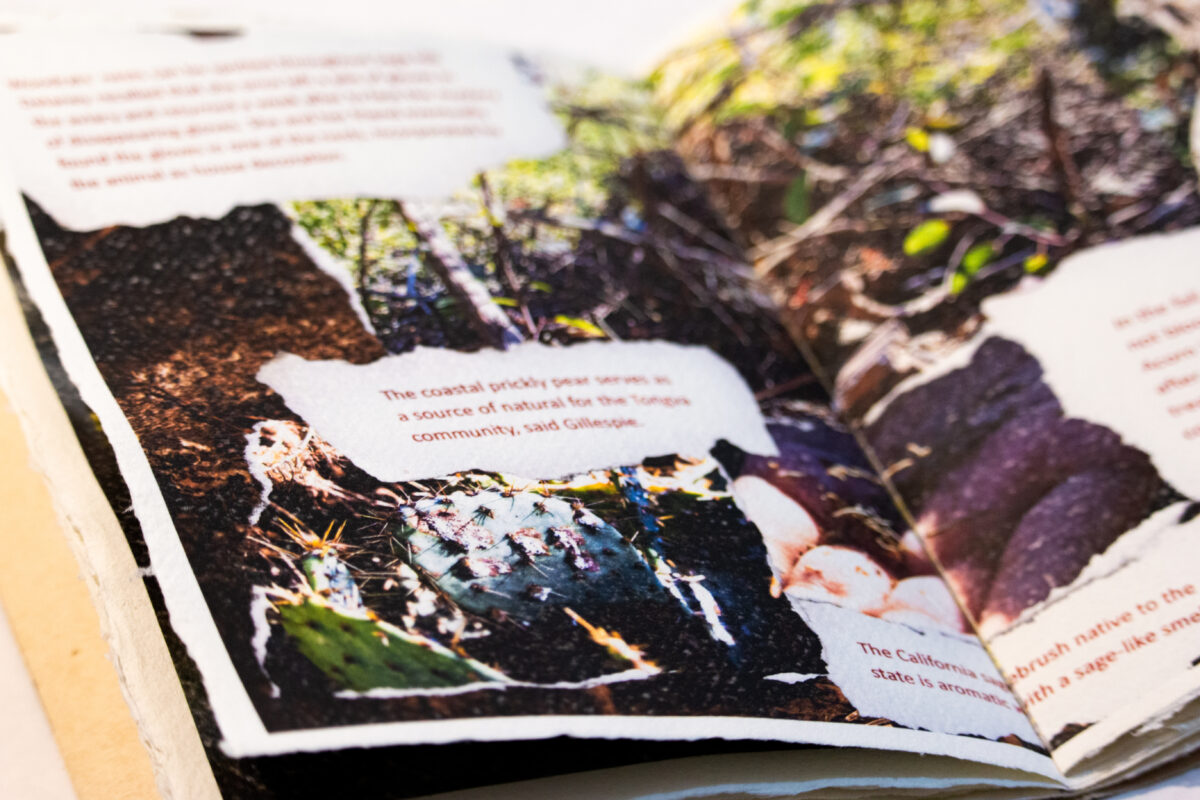
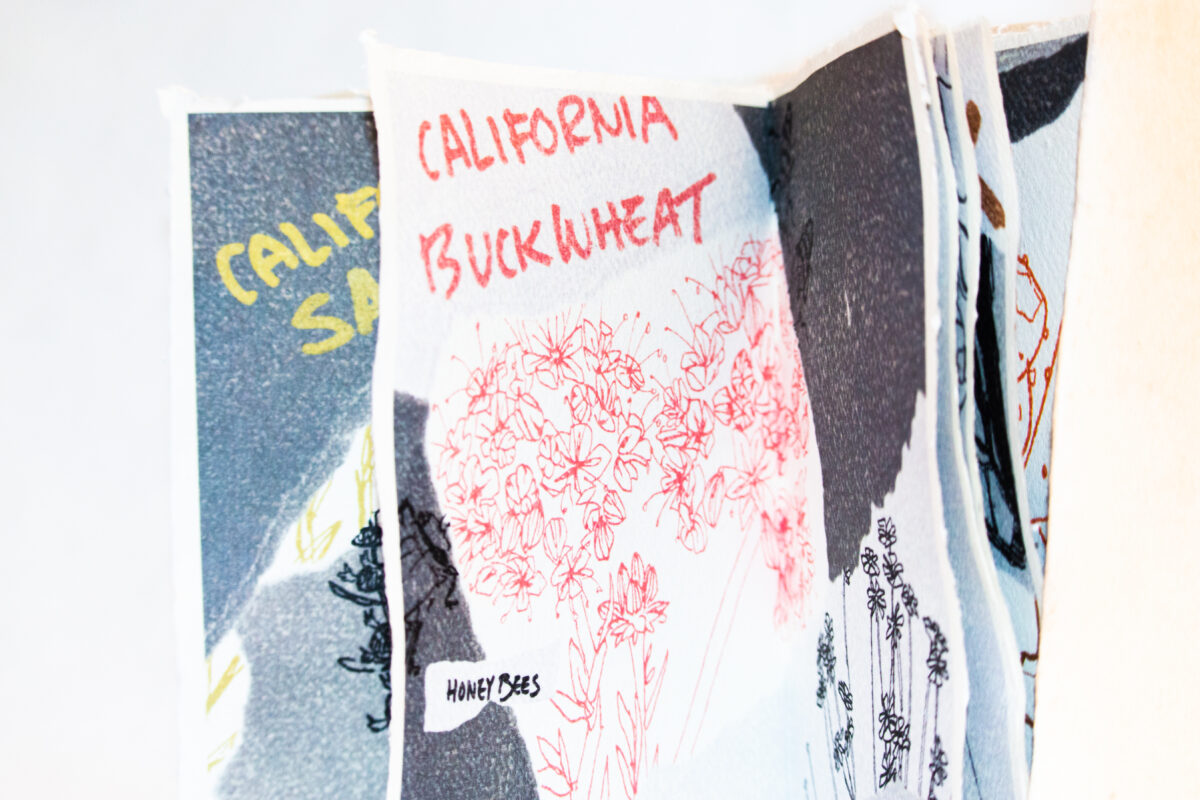
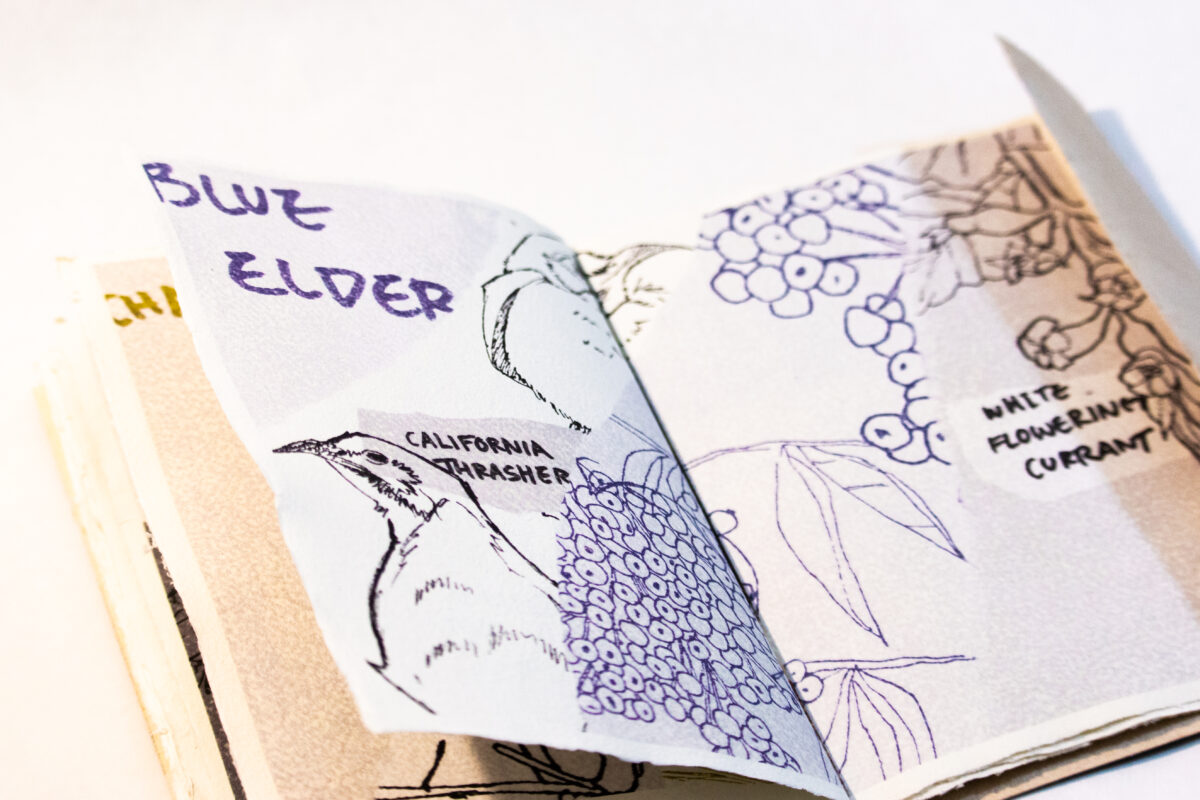
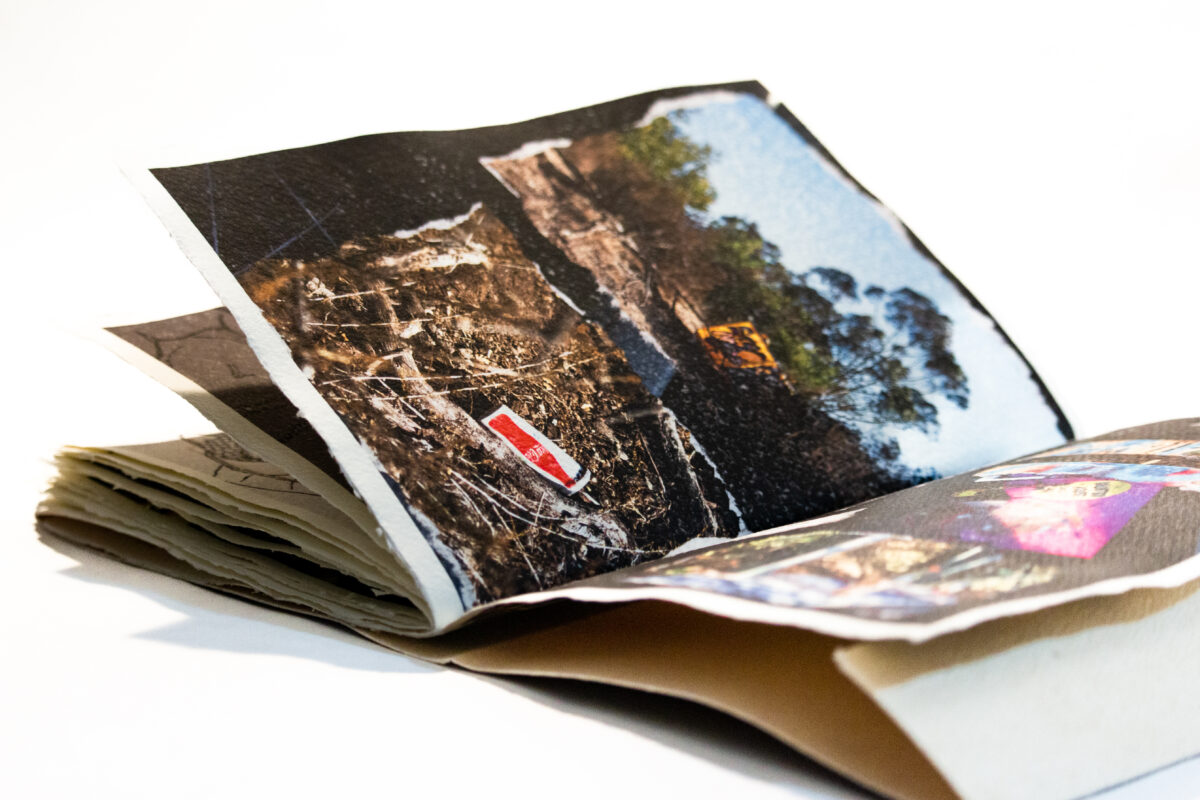
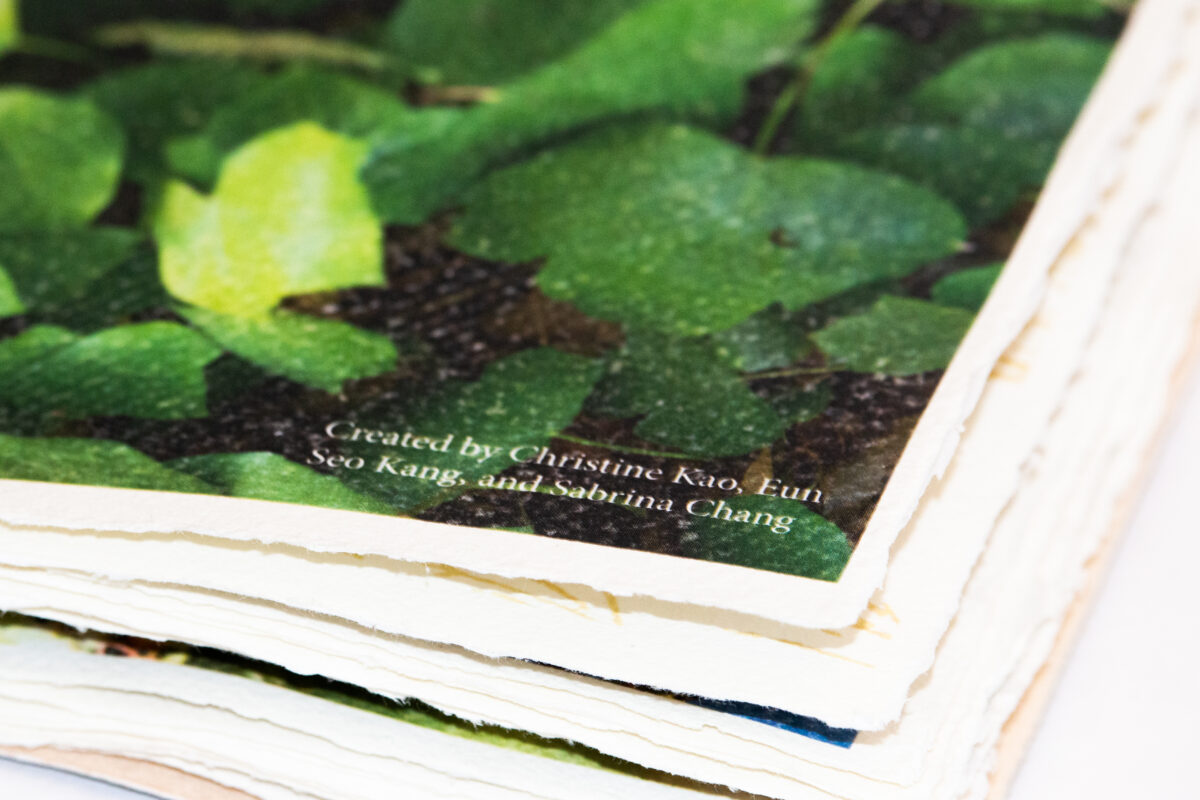
Sage Hill, also called ‘Narnia’ by those familiar with the place, stands at the edge of campus further from the hill. It is not as accessible as the botanical garden nor as curated as the sculpture garden, but it is home to the most diverse plants and animals native to California in west LA.
In Conversation with Sage Hill is a bespoke book created for sincere potential stakeholders for Sage Hill as a layered portrait of the location’s past and current state. Through photography, sketch illustration, research, and the collaboration of current stakeholders, we aimed to create a book that best reflected the spirit and unconventional charm of Sage Hill.
The aesthetics of the book are deliberately severe and various ripped paper was used as the main visual motif that connected all the fragmented elements of the book like the photos and illustrations. The act of ripping paper can be best described as an expression of the inner state through an outward motion, and by using layers of torn edges to frame different elements of Sage Hill, the book expresses both the frustrations and potential of Sage Hill of having so much knowledge and history contained in itself, but not a lot of people looking for it. We hope that through this book, Sage Hill will find the people that are willing to be a part of the dialogue and find themselves in a deeper relationship to it.
Tones of Sage Hill
— a music box that voices the textures of Sage Hill, by Louis Gluck
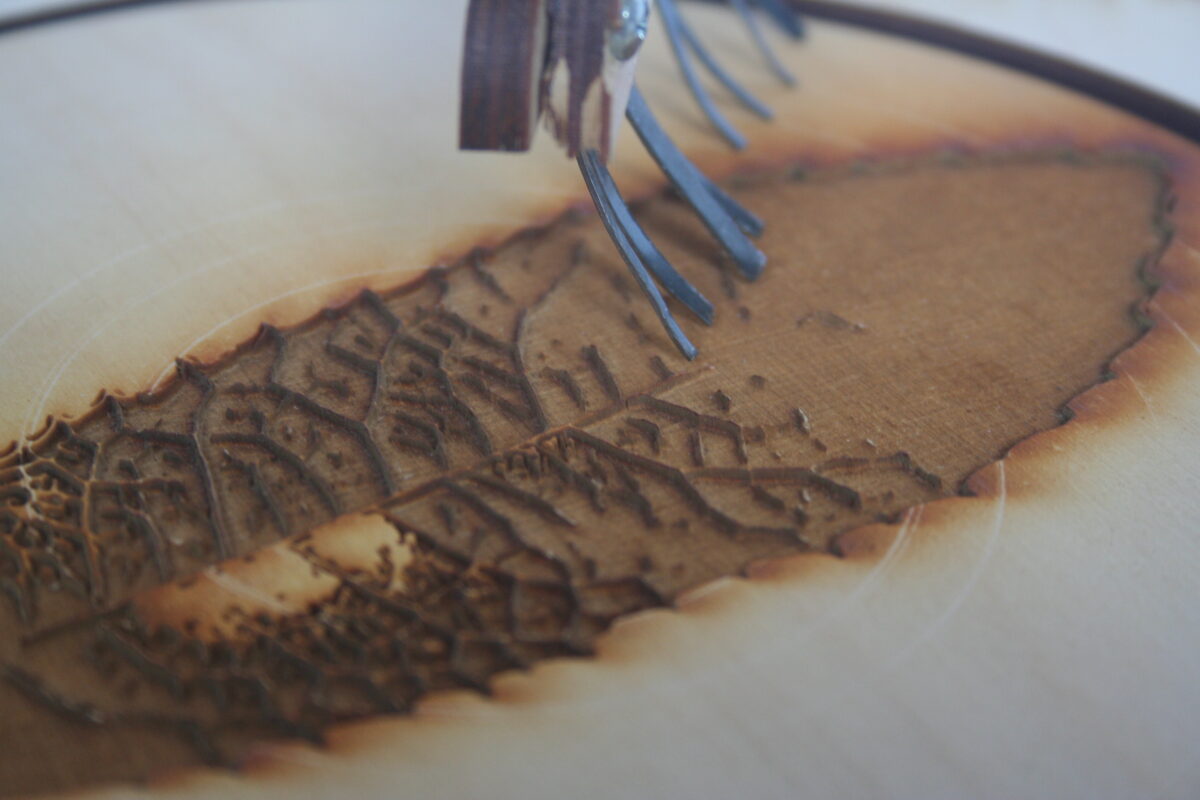
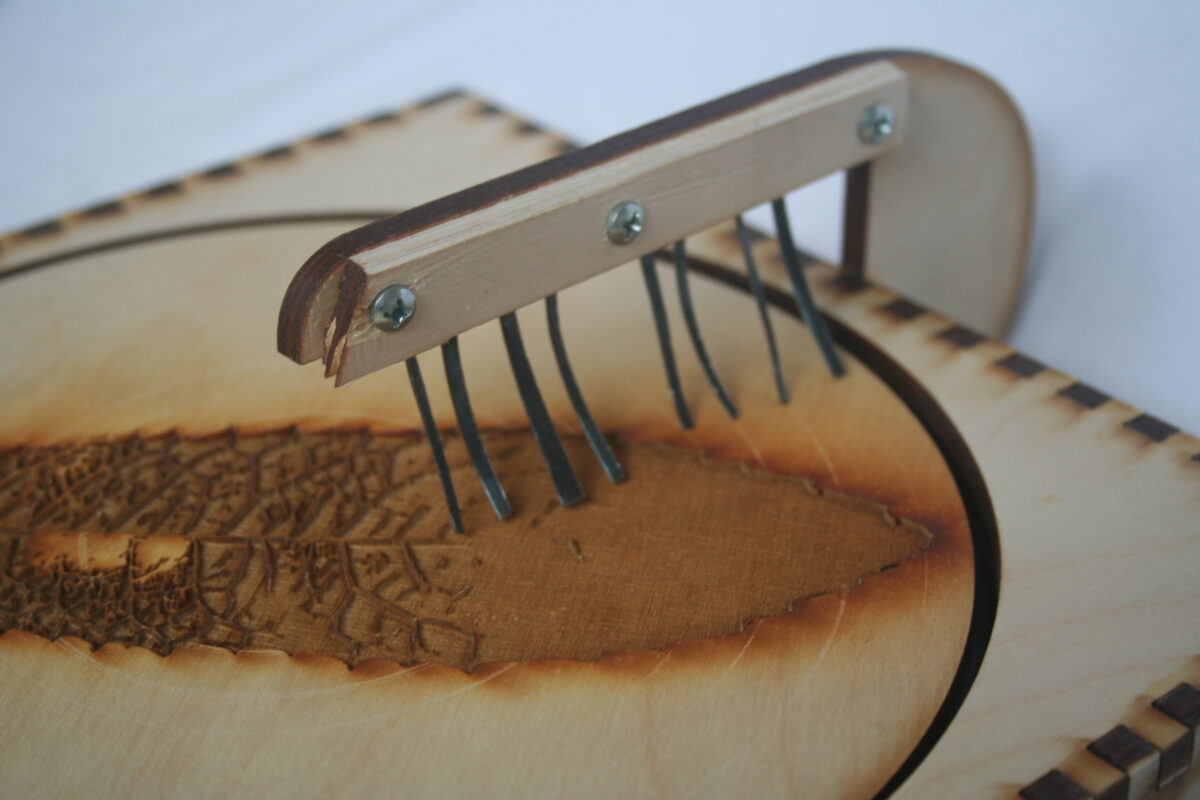
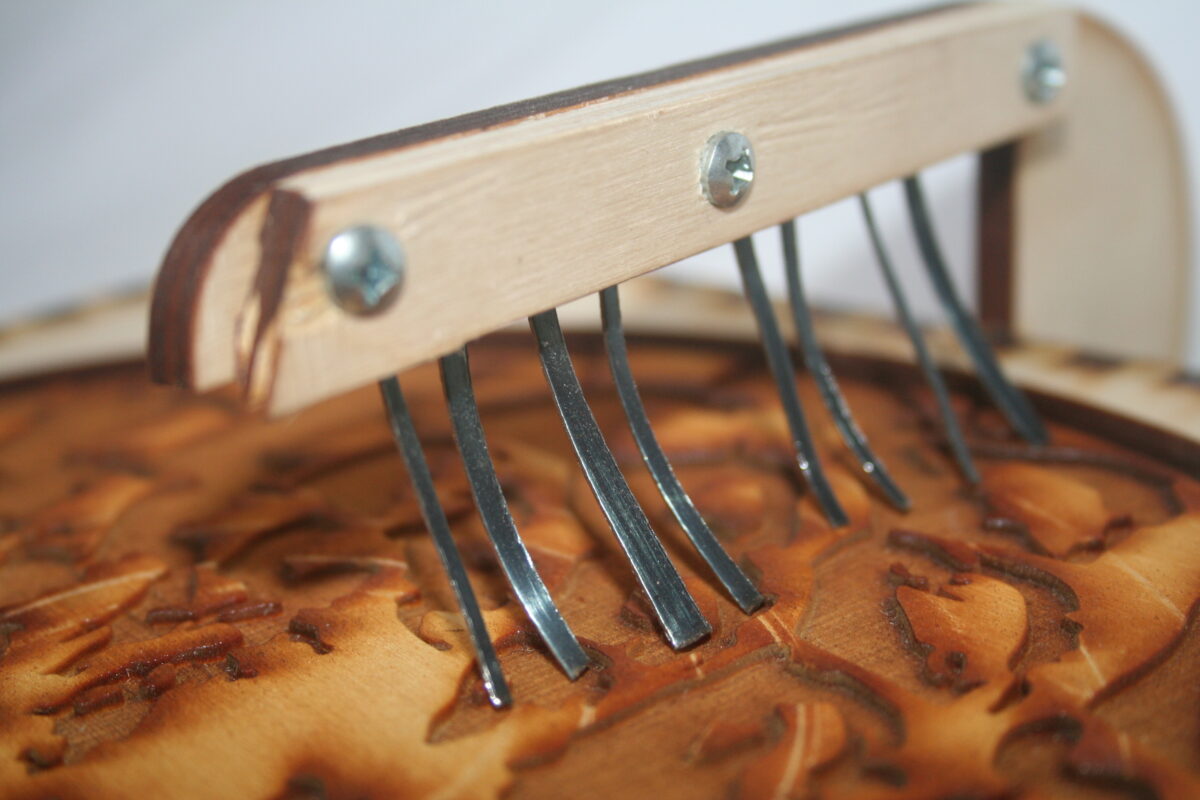
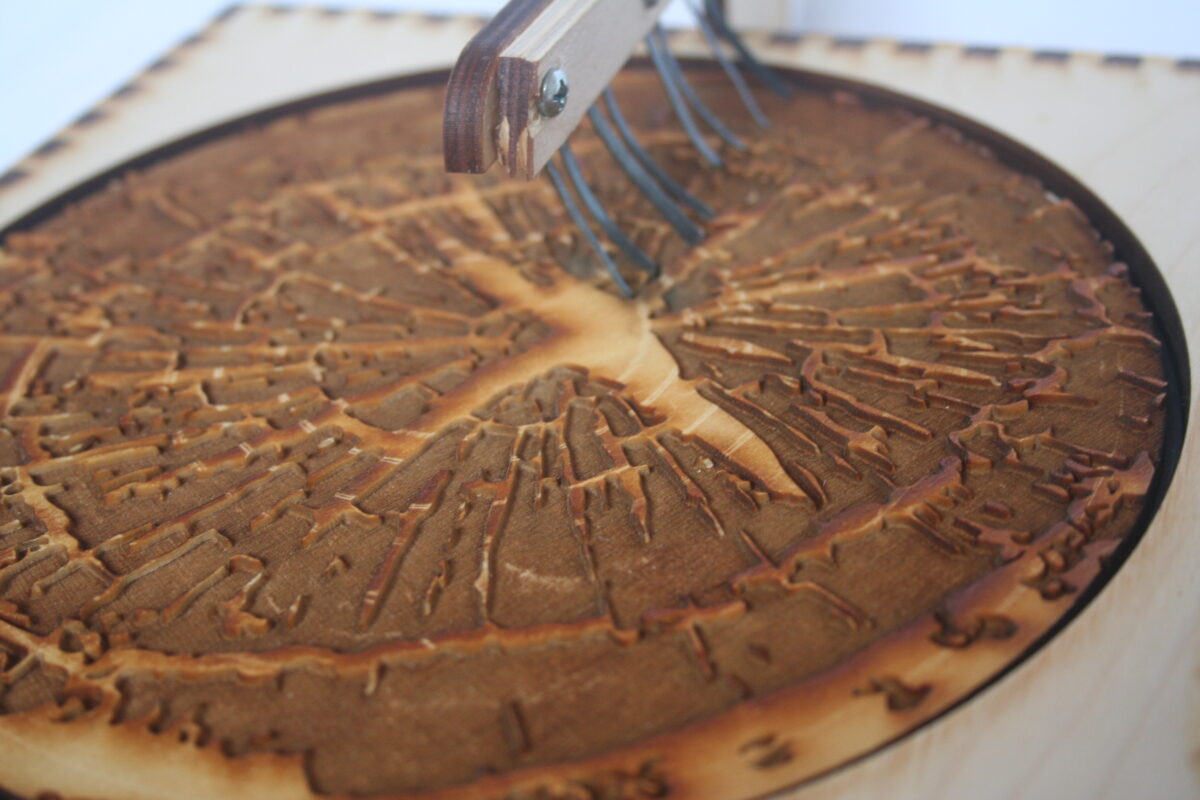
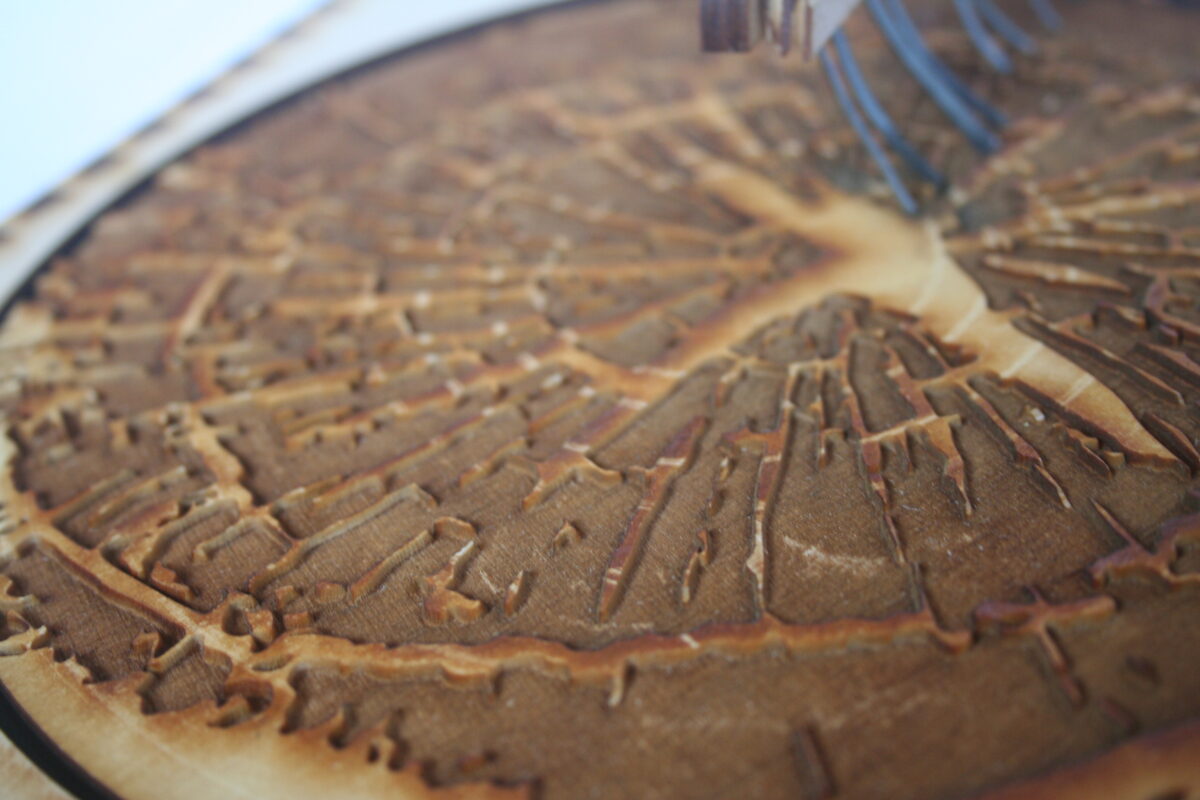
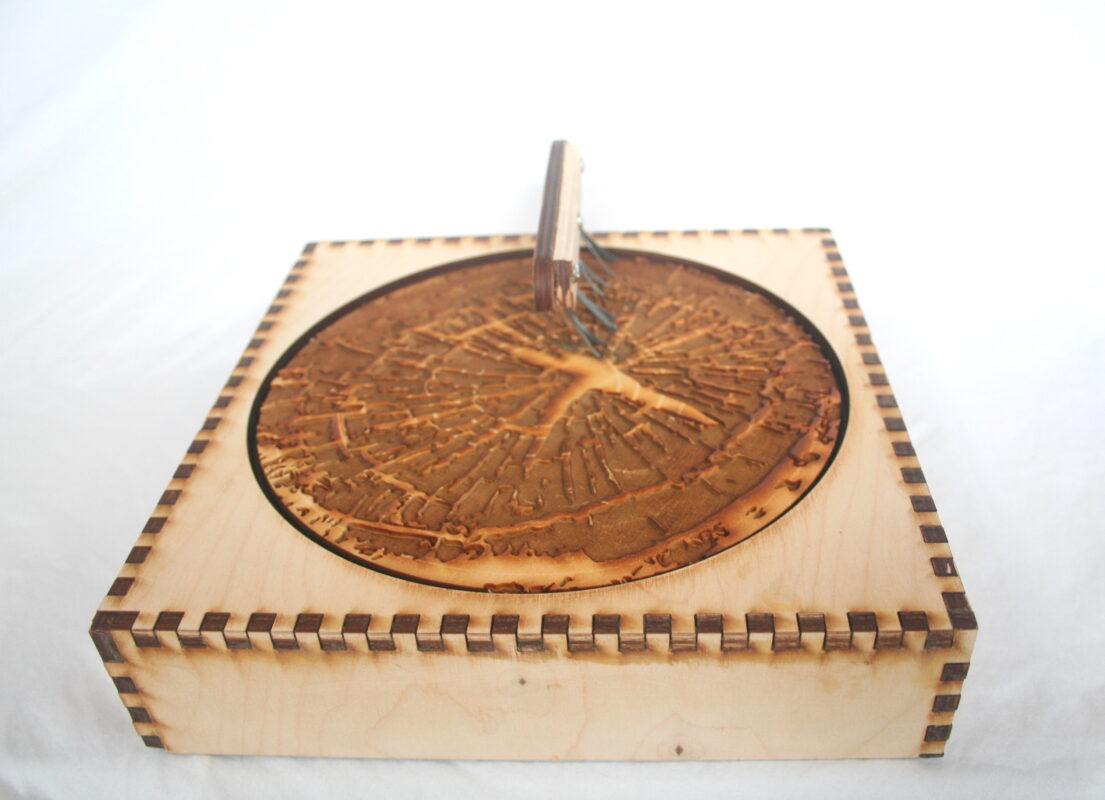
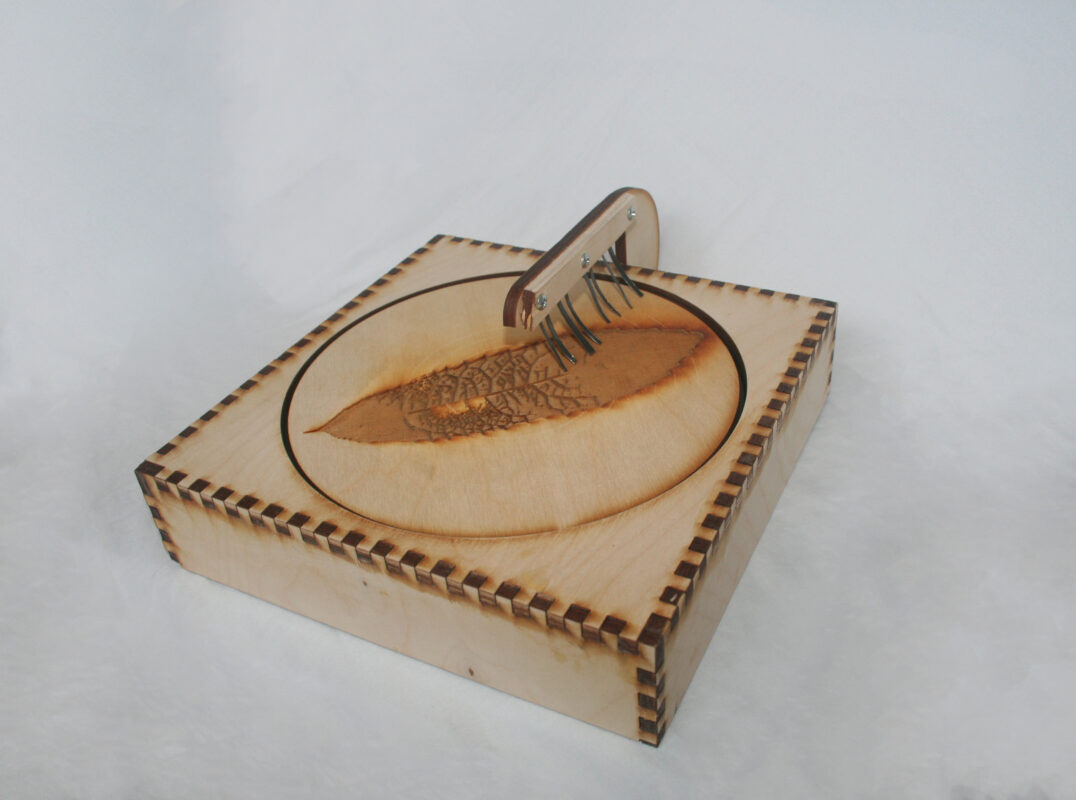
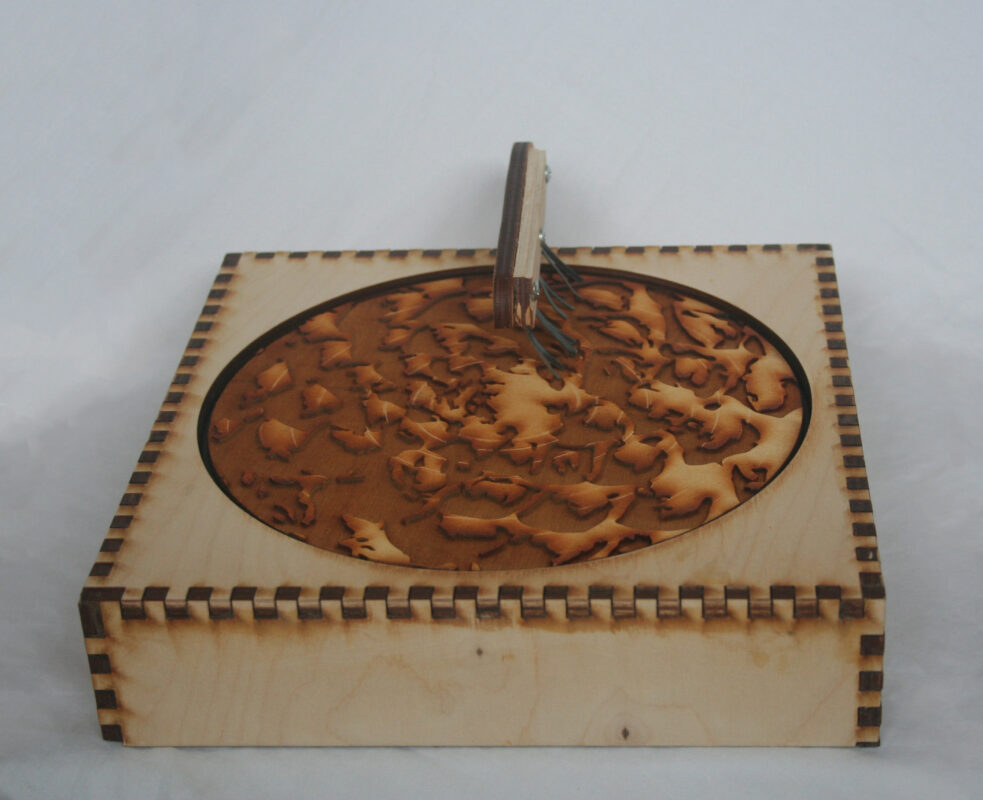
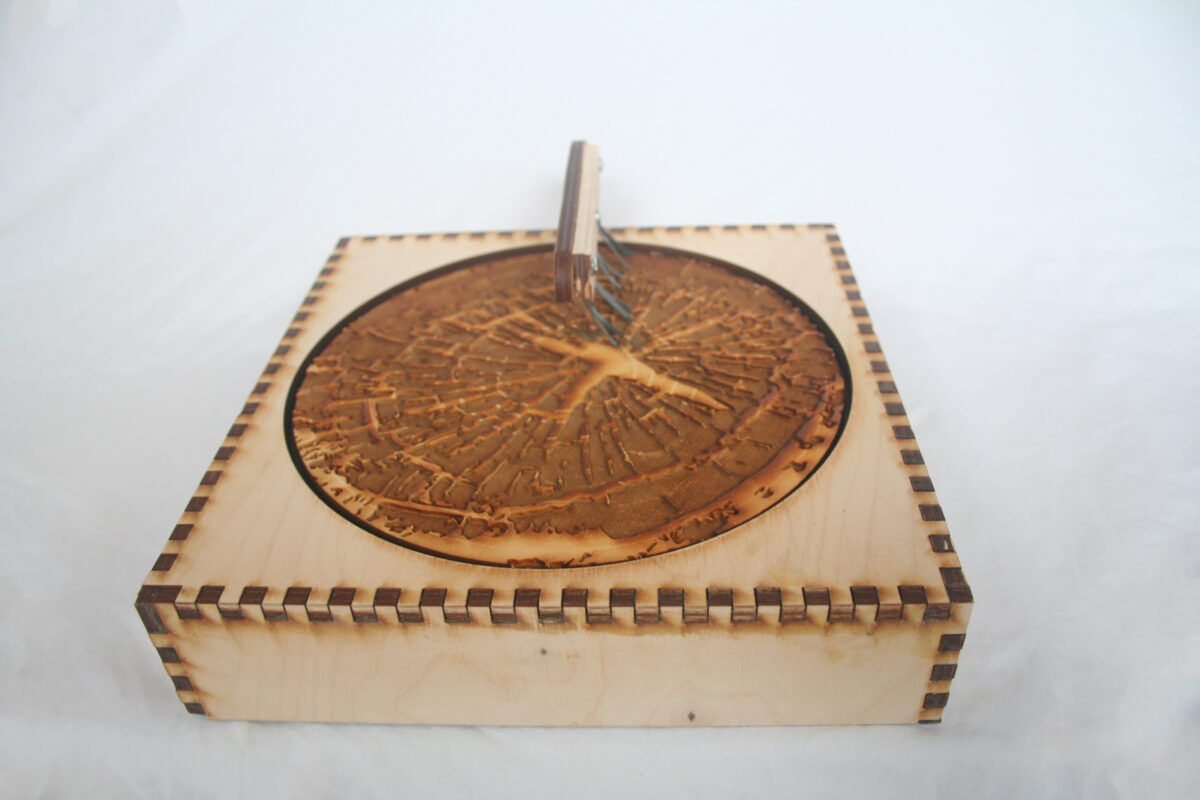
When first exploring Sage Hill, what immediately struck me was the noise pollution in that space. While I experience natural spaces as a way to rejuvenate my senses and experience unaltered surroundings, Sage Hill had loud cars drowning out the serenity. Upon researching noise pollution further, I learned that it can affect the health of an ecosystem and all of the organisms living in it. I set out to create a project that combined the seductive textures of sage hill with my desire to rematriate sound to the land.
My music box uses textures collected from sage hill—a stump, a pinecone, and a leaf—in order to play sounds using metal tines. I laser etched the textures and laser cut the box out of wood. I like the soft natural material which has interesting joinery while still emphasizing the textured circle as the centerpiece. The noise is unsettling and tonal, challenging what we think natural beauty is and what it sounds like. Additionally, the metal tines scrape away at the soft wood leaving marks that will eventually become grooves, showing the impermanence and damage caused by imposing the industrial on the natural.
Sage Hill Temple
— an installation that re-consecrates the sacred site that is Sage Hill, by Paige Brunson, Alexia Magdaleno, and Charles Tran
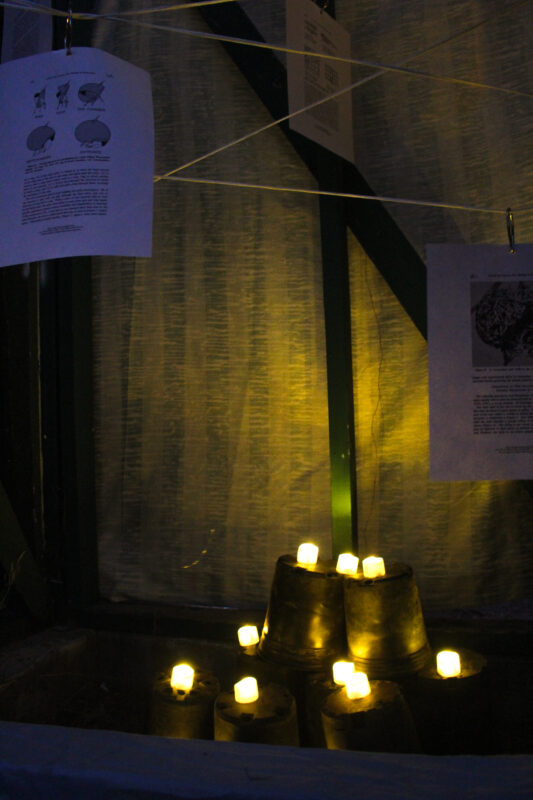
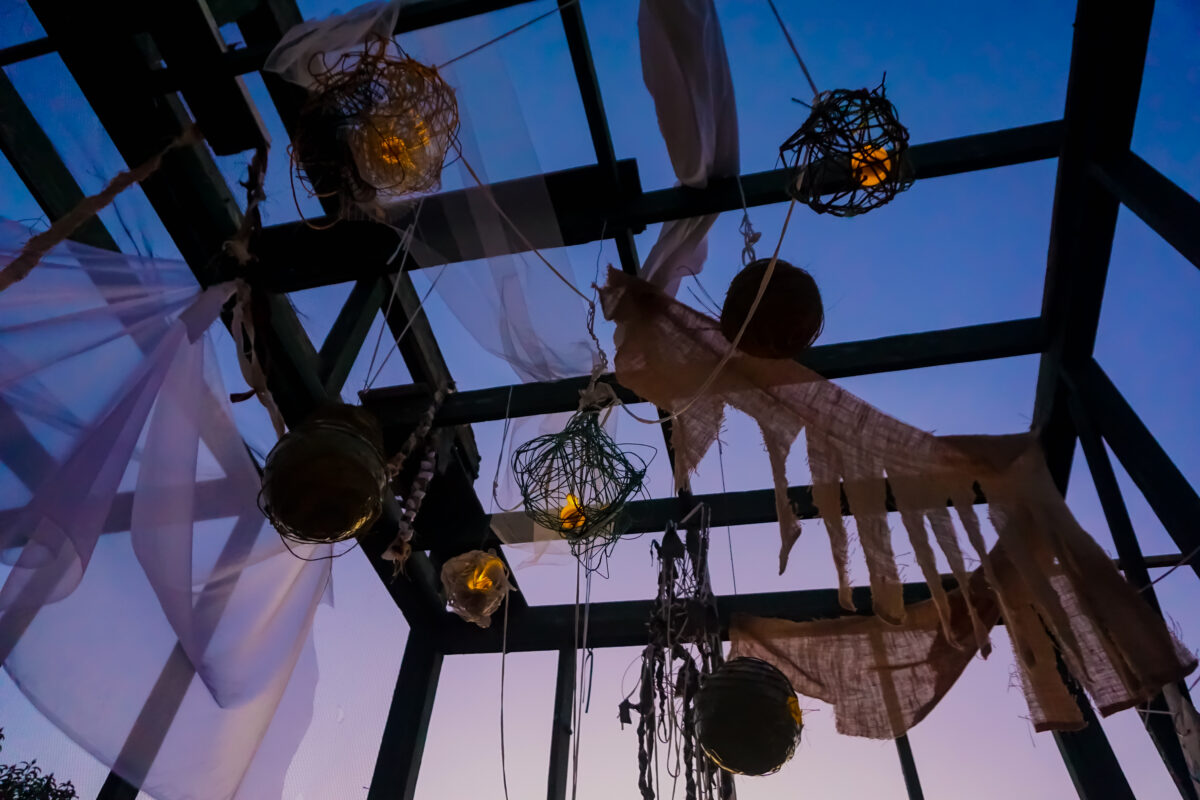
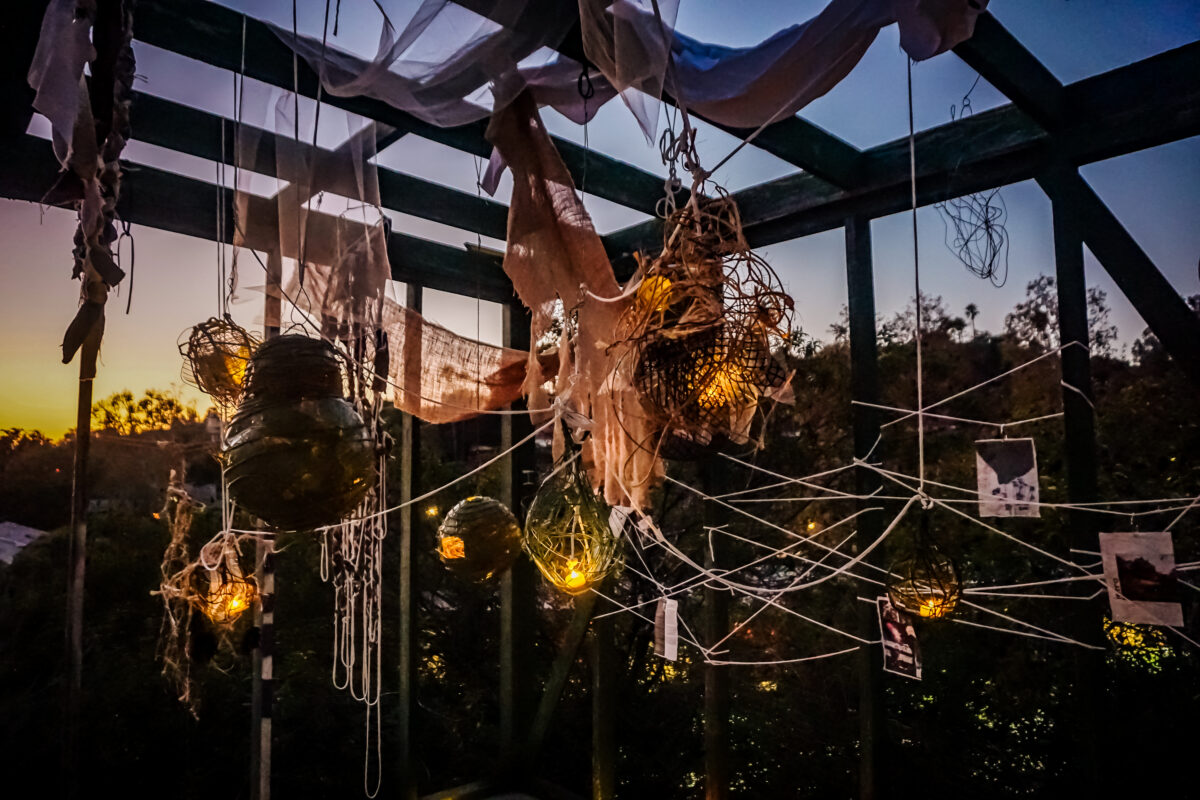
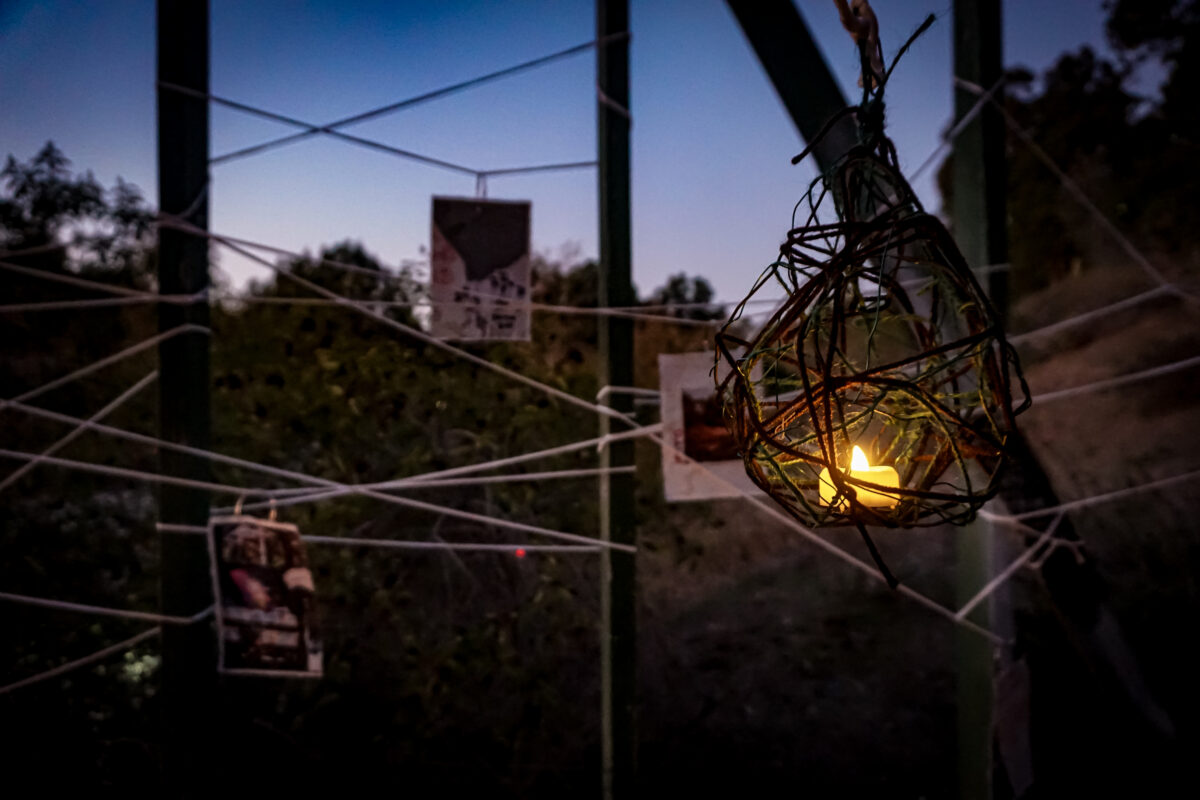
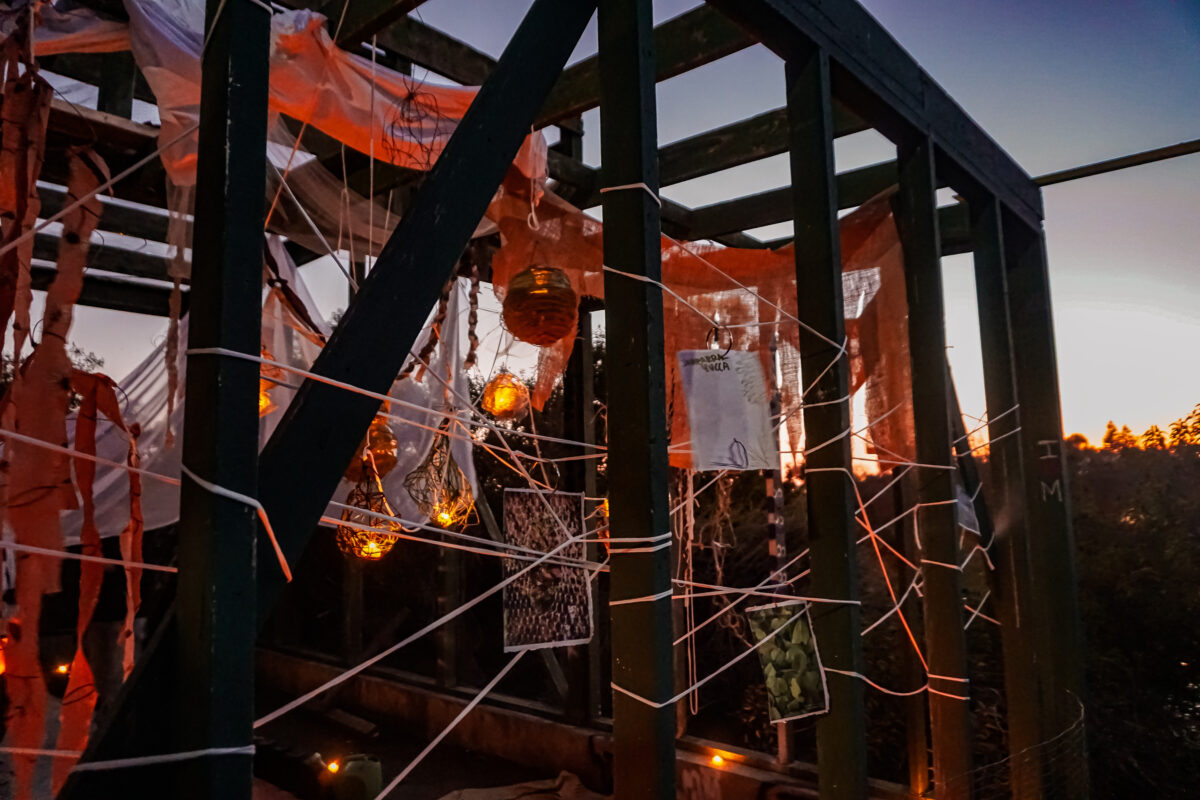
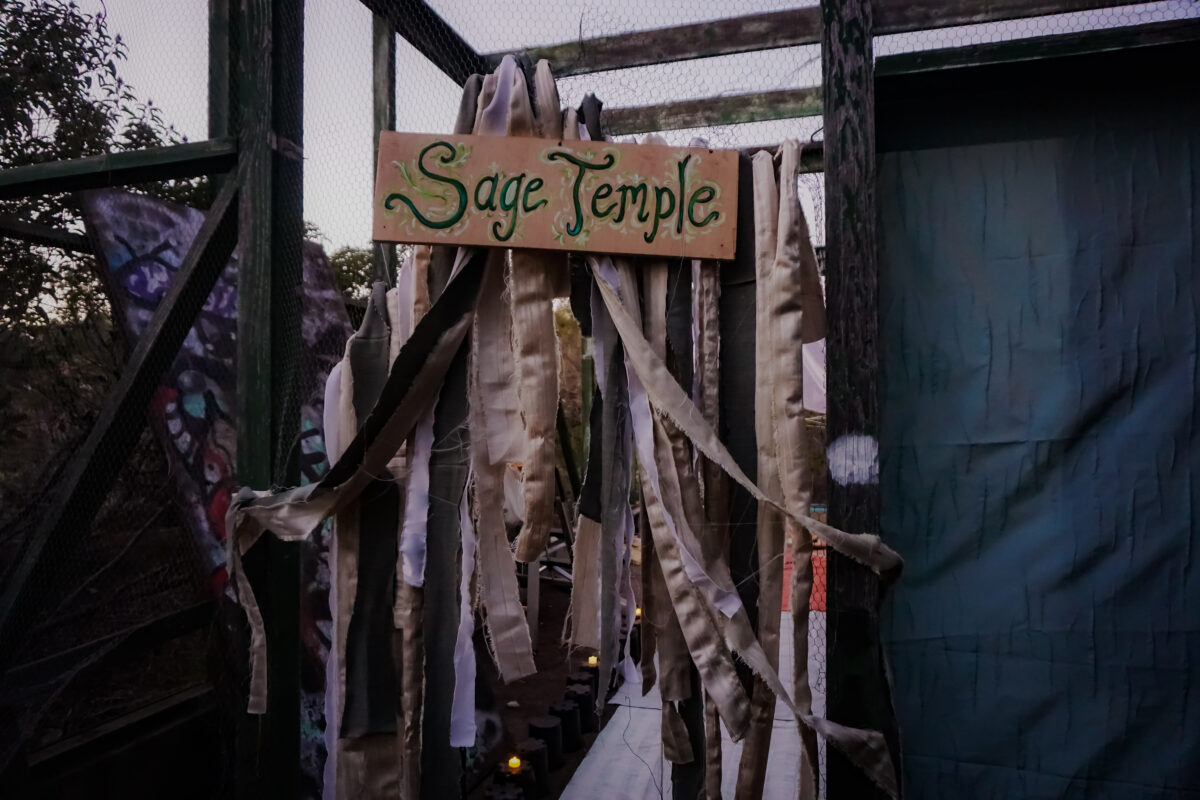
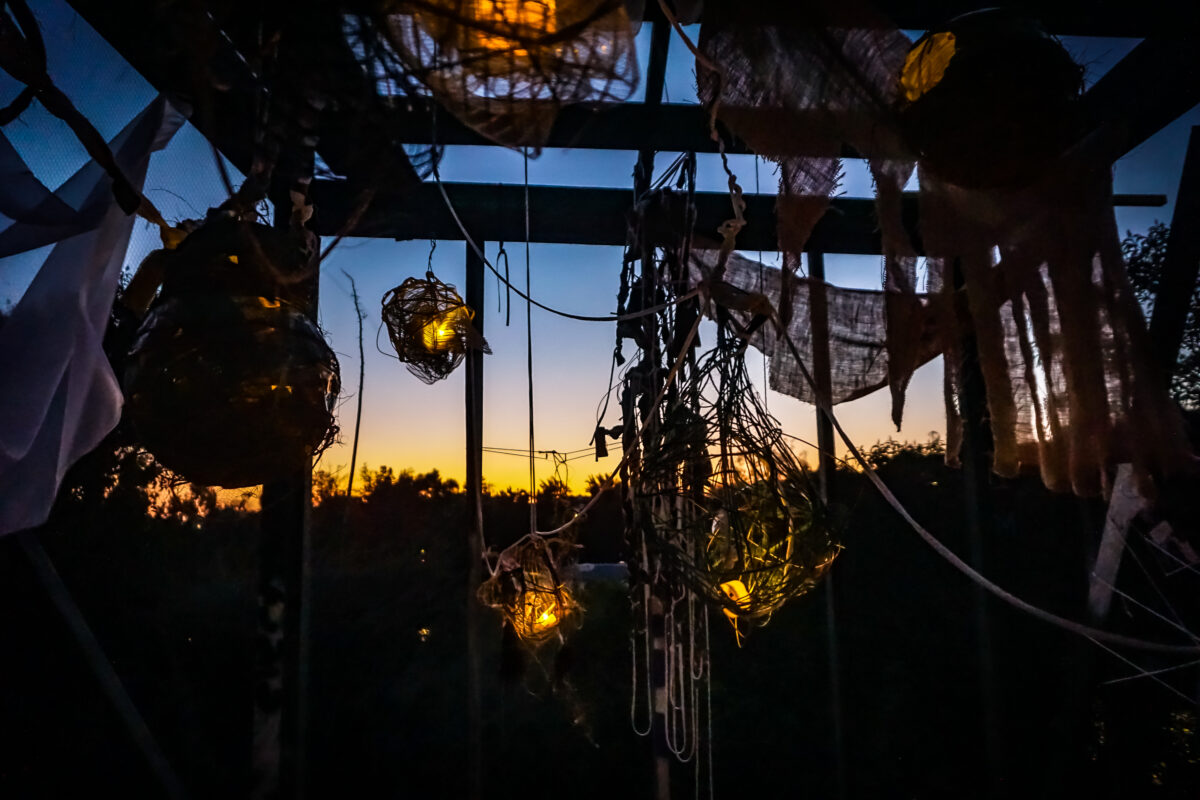
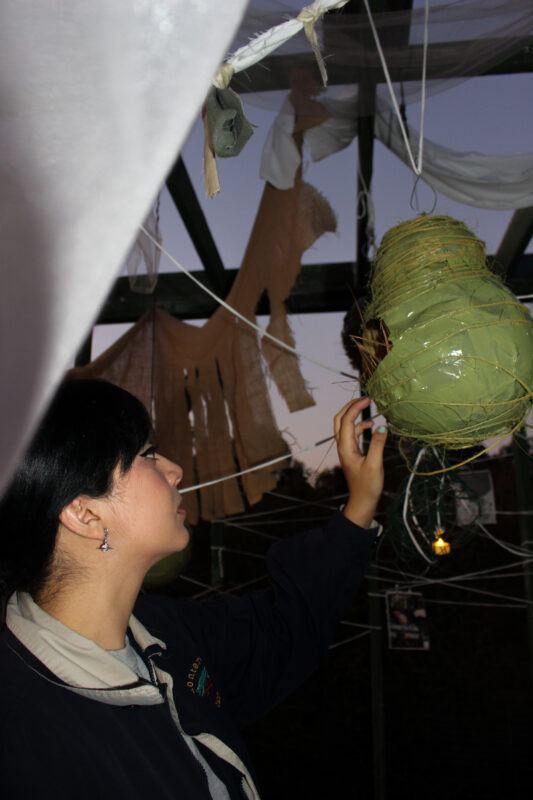
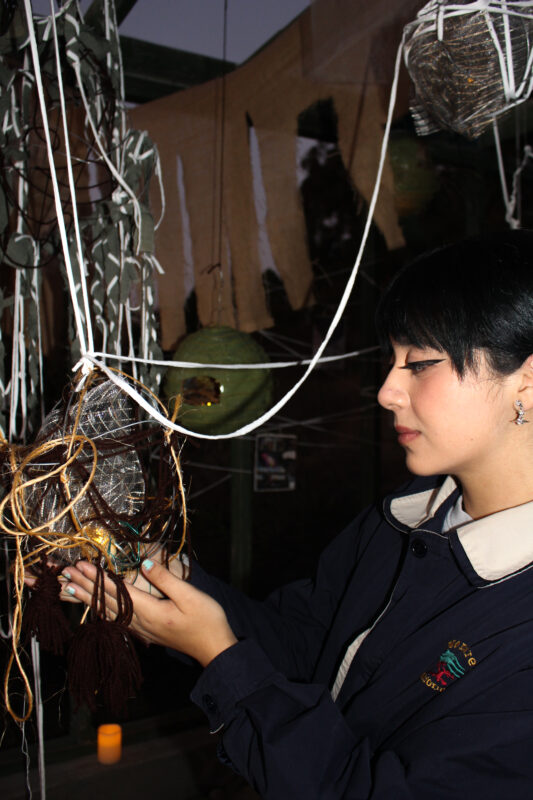
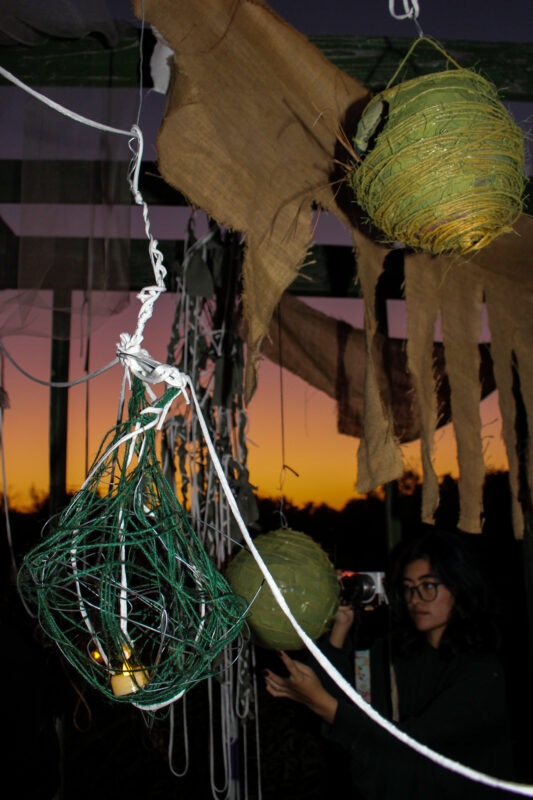
We view home as a sanctuary where we can grow, nurture, rest, and live comfortably. This idea of home is present in many living organisms. Sage Hill is home to many animals, plants, elements, etc. The aviary at the top of Sage Hill poses an interesting thought and concept of what home is, as it was used to study African Weaver Birds in the past. Birds that have been uprooted from their native lands of Africa and put into this enclosed cage in California. However these birds have built these beautiful and organic nests inside this enclosed space. Making home by using the materials around them and creating a sanctuary for themselves and their community. We resonated with the African Weaver Birds’ stories as they relate to our parents’ immigration stories and how they immigrated from their native countries to the U.S.
In our Sage Hill Temple, we pay homage to the African Weaver Birds by making sculptures that reflect their nests. Like the African Weaver Birds, our team has used a variety of materials to create the nest ranging from wires, fabric, newspaper, and twine. In each nest, there is a candle that emits a yellow flicker. The yellow hue pays homage to the spirit of the African Weaver Birds and their history. Underneath the nests are rugs where patrons can lie down and stare up into the nests and exposed ceiling of the aviary. The nests interact with the elements of Sage Hill as they lightly sway in the breeze. Underneath the canopy of nests lie layers of rugs where one can lay down and rest. The color palette of the rugs range from neutral earth tones to floral and botanical patterns.
Surrounding the nests is draped fabric that connects the incoming trees to the manmade wire fence of Sage Hill. The weaving of the two materials showcases an interlocking connection of the past and present, nature and man-made, organic and inorganic, and all the layers that have been cultivated within the space of the aviary.
Sage Hill Website
the design of a website for Sage Hill, by Lexi Fleck, Ruth Lee, Joyce Tan, and Janie Wang
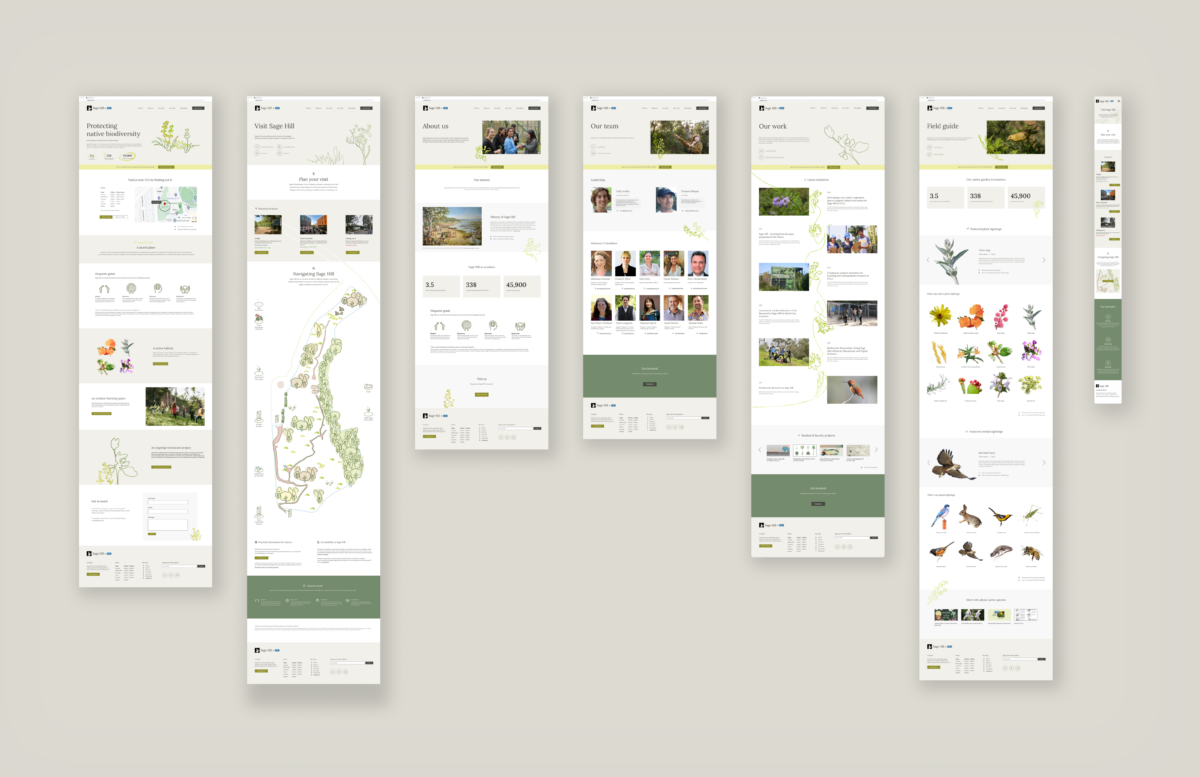
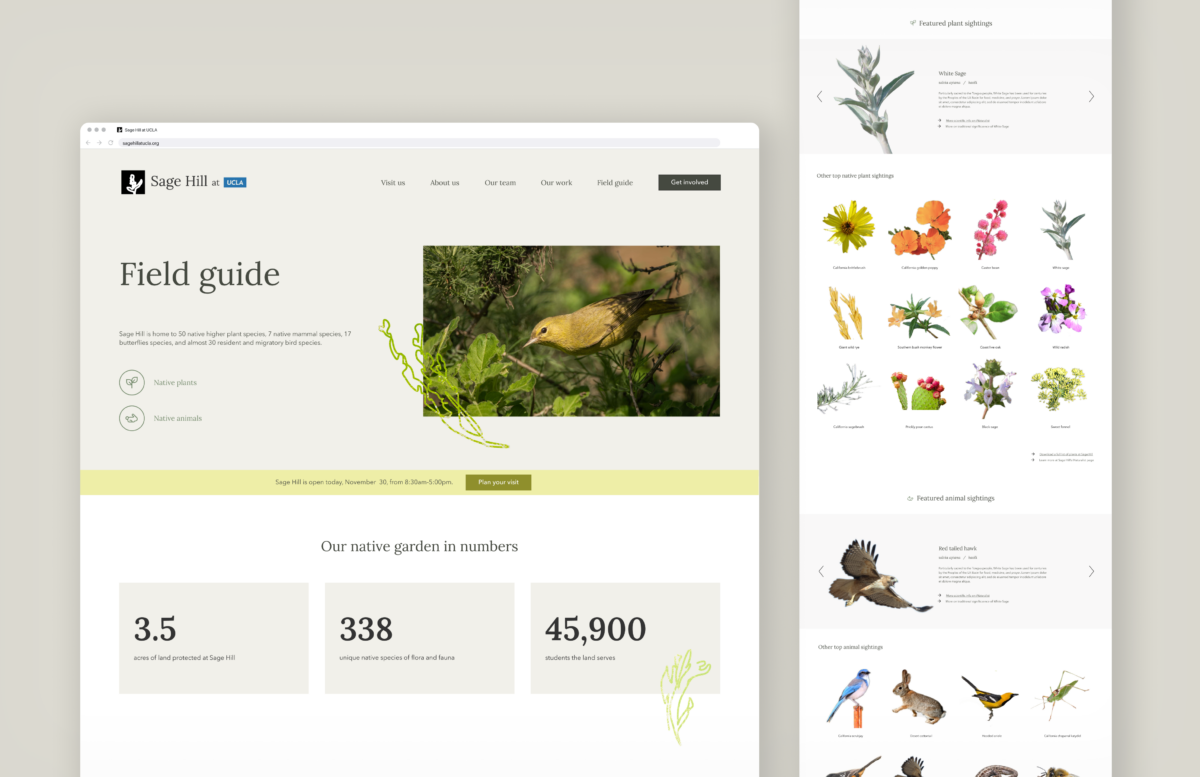
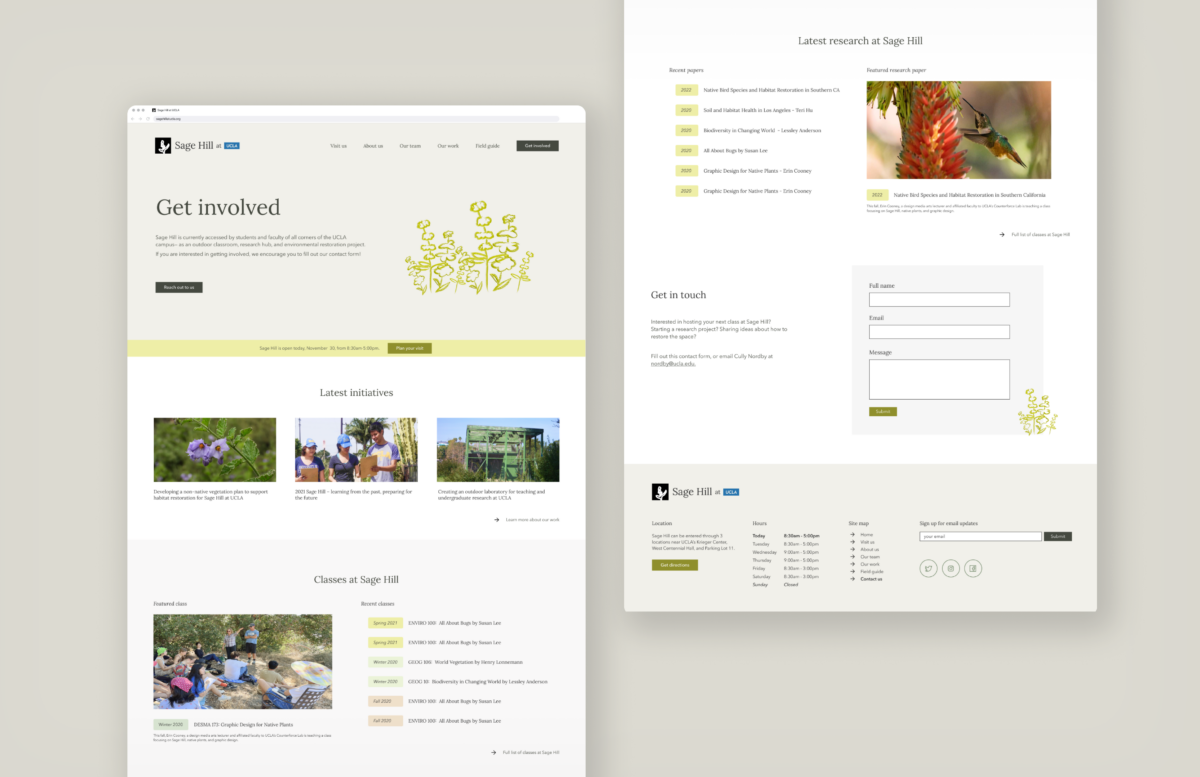
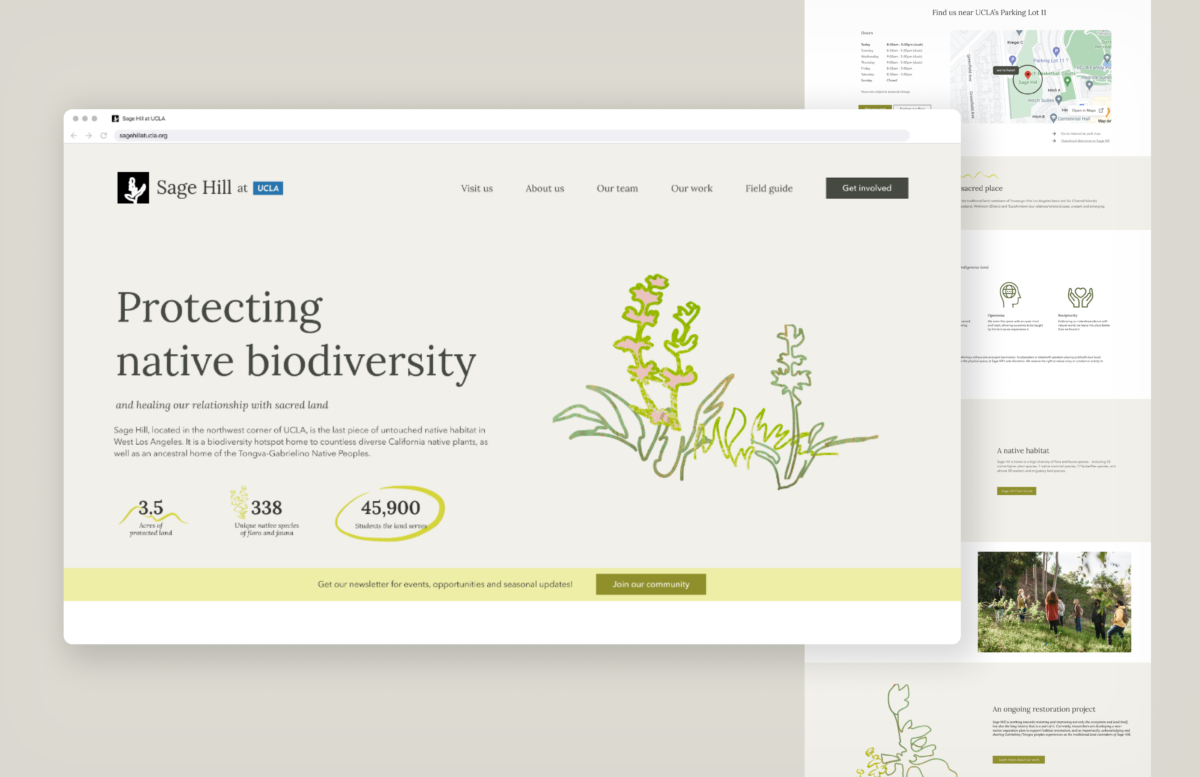
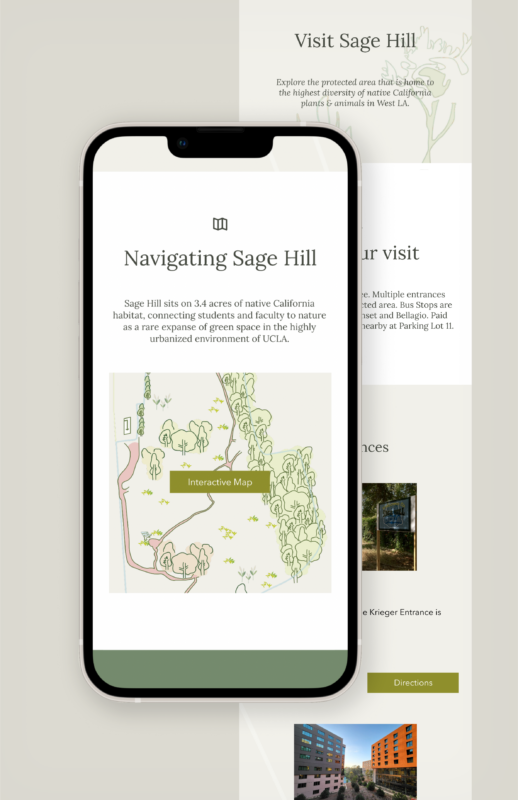
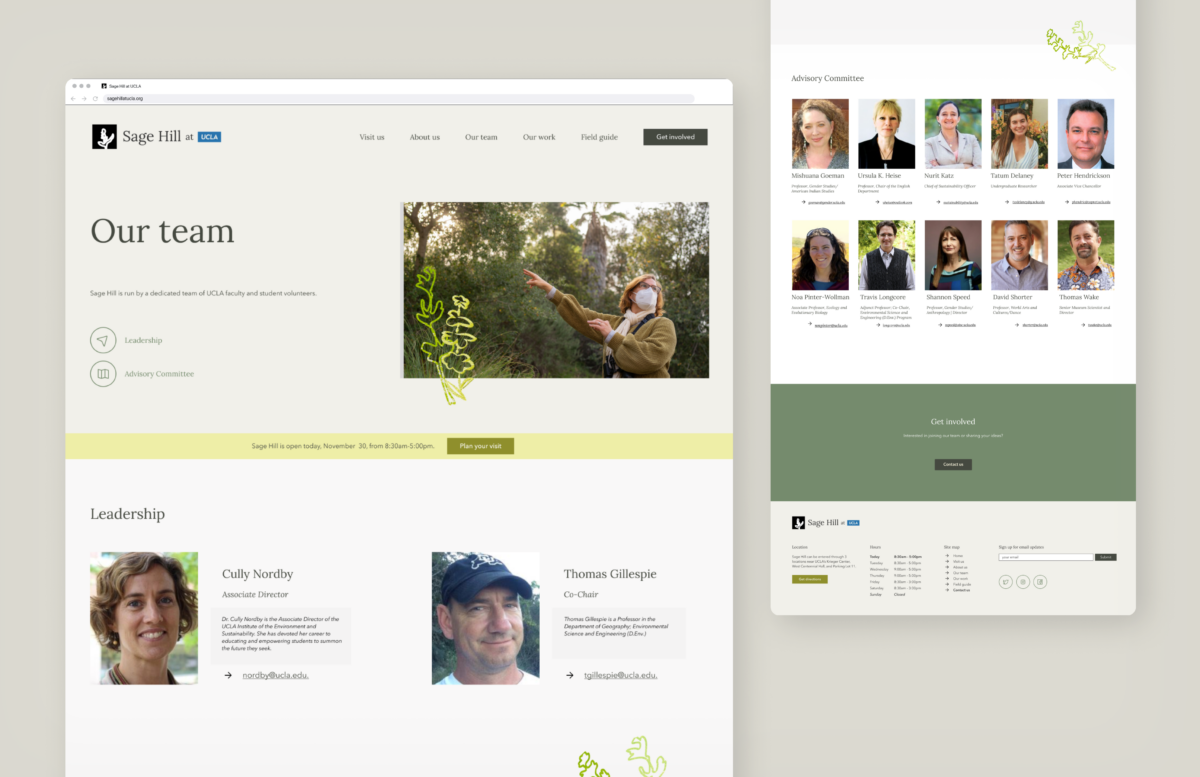
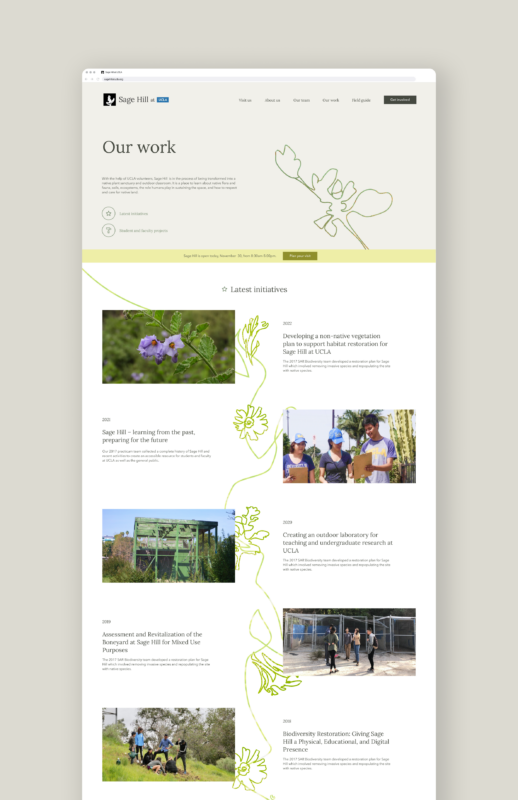
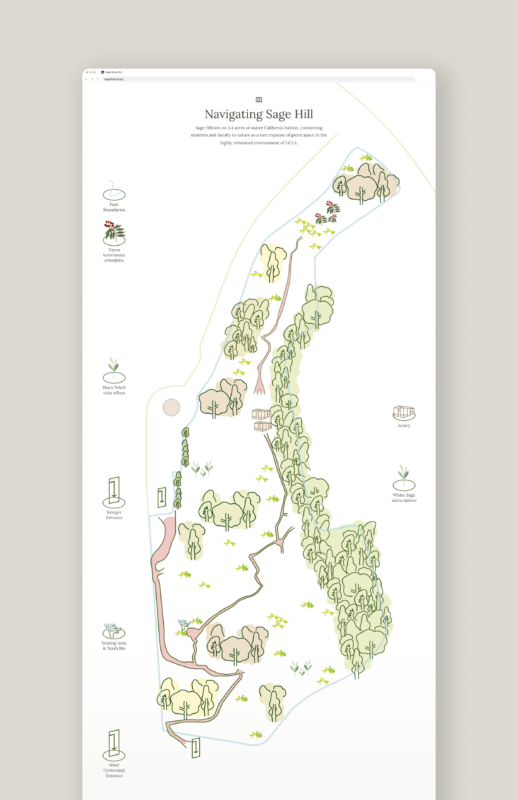
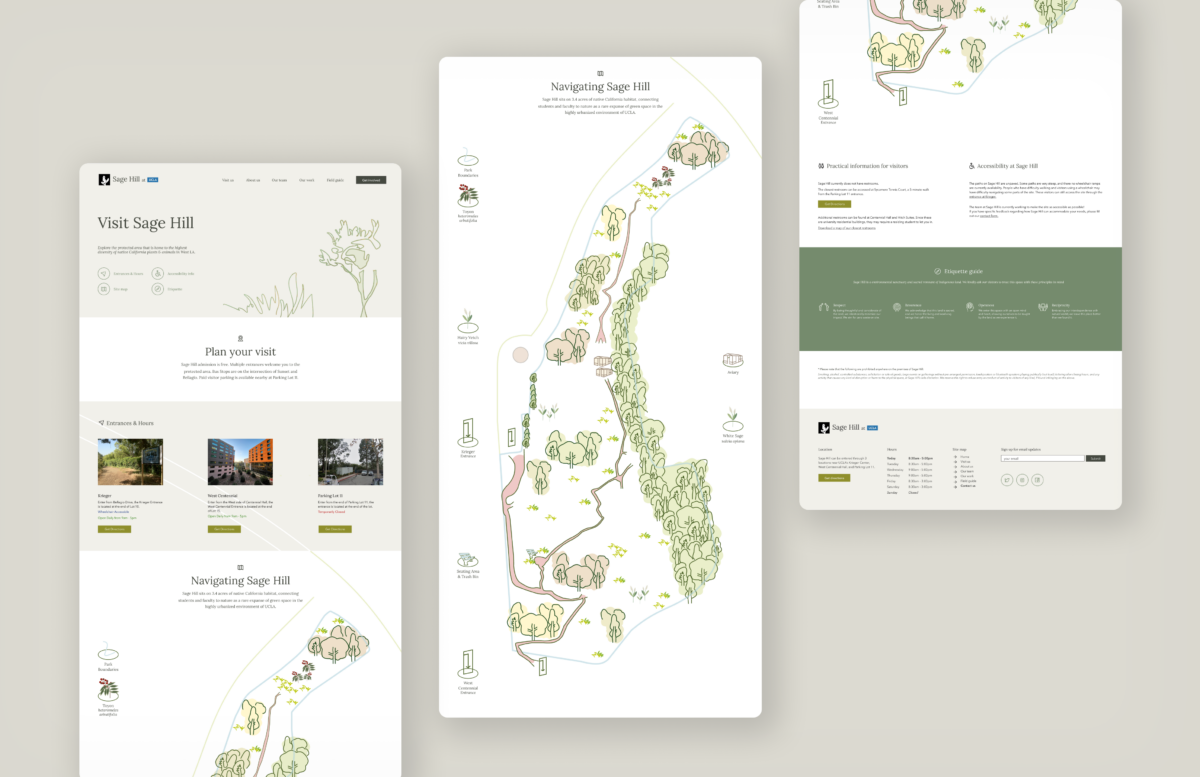
The Sage Hill website has four main intentions: to educate those within and outside UCLA campus; to cultivate reciprocity for sacred indigenous land; to create a personal, intimate experience for every visitor; and to demonstrate the irreplaceable value of the land to advocate for resources to protect it, celebrate it and enrich it.
As a team of UX designers, architects, mapmakers and researchers, we created a comprehensive website design blueprint and principal brand identity for Sage Hill, which its future leaders and stewards can build upon as the land grows into its own. We pursued each step of the process by continually asking ourselves, “How do we encapsulate the essence of Sage Hill? How do we capture the feeling of its presence through the screen in a digestible and informative way?”. Leaning into calming earth tones taken directly from our field visits and photos, as well as organic and elegant typography and hand-penned illustrations, we imbued our website experience with the same humble, quiet voice and nature of the land itself. Our hope is that our website marks the beginning of a kind of renaissance for this special space on campus, and ushers in an era of recognition, creative exploration and respect for the land that holds so much wisdom, right outside our classrooms.
Decomposition Disco
an animation that depicts the process of material and biological decomposition, by Maxine Gonzalez
Sage Hill Postcards
a postcard project about memory inspired by Sage Hill, by Rachel Kim
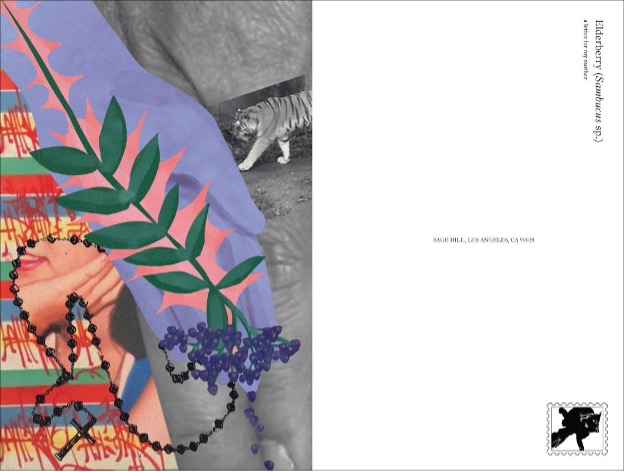
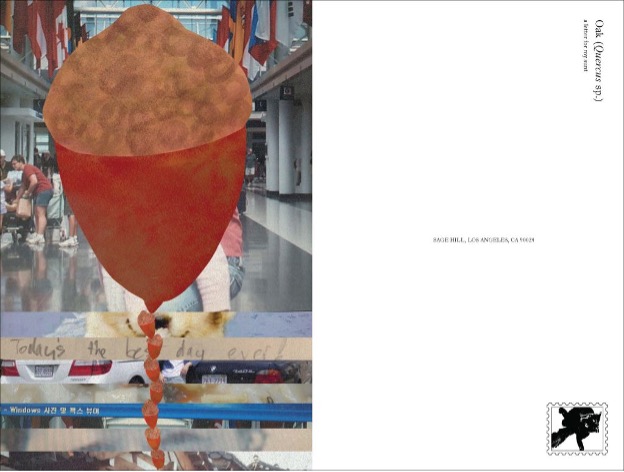

These three postcards represent my personal relationships and associations with the native plants that reside in Sage Hill and my home, Los Angeles.
My mother would feed me elderberry syrup as a kid whenever I felt under the weather, and I would be resentful because she wouldn’t use western medicine. There’s a saying that Korean mothers sing to their children when they have a stomachache— “Your mother’s hand is a medicine hand.” I feel shame and regret for being so dismissive of my mother and not trying to understand her as a person as well as a mother. One of my biggest challenges right now is to close the distance between us.
My aunt is someone who was a mother to me in my childhood when my mom was neglectful. She was deported to Korea when I was in elementary school and ran a restaurant serving acorn cuisine to keep herself afloat. She still cares for me as if I was her only daughter, but she doesn’t really know who I am now. I’m planning to visit Korea after graduation, the first time since 11 years ago, and rebuild my relationship with her.
I don’t remember too much of my childhood, but I remember fighting tooth and nail to survive and to find my community. The cactus is an ode to the challenges that I’ve overcome, the hardiness that I’ve developed, and how I’ve bloomed so beautifully after moving to Los Angeles.
These postcards will eventually be filled out once I figure out the right words to say, and sent to their respective recipients.
Sol of Sage
the production of candles using botanical essences of Sage Hill and supporting book and cyanotypes, by Sunaina Bose, Harrington Lewis, Fabien Rios, and Allison Wu
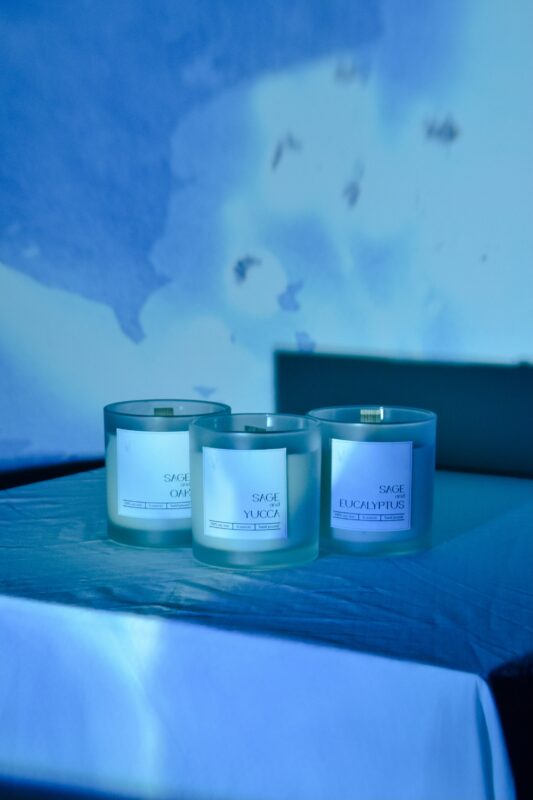
Sol as in Sun, or alternatively, So(u)l of Sage, is an effort to raise awareness of everything that UCLA’s Sage Hill has to offer. Named to emphasize the soul of the space itself and the importance of the sun to the growth of life, Sol of Sage emphasizes knowledge and history to create a holistic understanding of the sacred and mostly unknown environment. Formulated and developed in the Design Media Arts Sage Hill and Graphic Design for Native Plants class, Professor Erin Cooney and Bobby Joe Smith III created a space for Allison Wu, Fabian Rios, Karrington Lewis, and Sunaina Bose to create. The information provided by Dr. Cully Nordby, the Associate Director of the UCLA Institute of the Environment and Sustainability, and Professor Thomas Gillespie, Co-Chair of the Environmental Science and Engineering Program laid out the groundwork for the project. Smelling coastal sage and being introduced to the various plant species motivated the group to think deeply about the implications of creating a product that would represent Sage Hill. Resting on Tongva land, the treatment was acted out in awareness of the hundreds of years that came before.
Sage Hill Posters
a Sage Hill poster series about appropriation using AI generated imagery, by Adam Lomeli
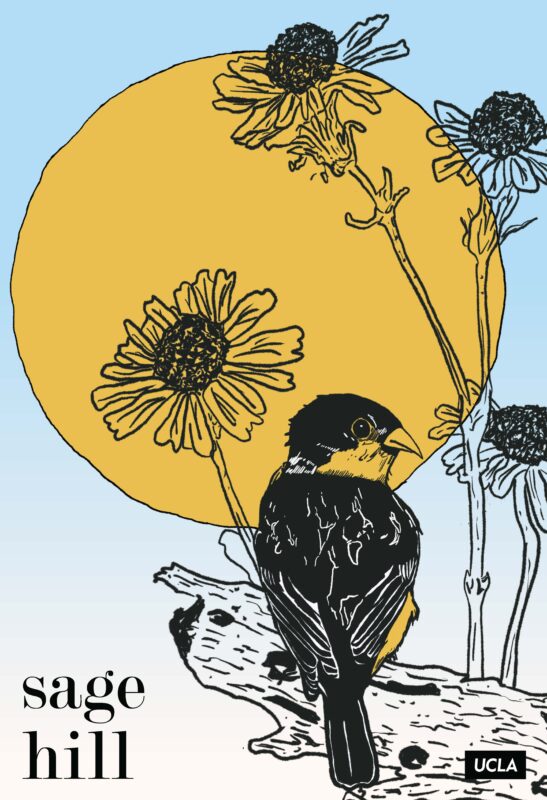
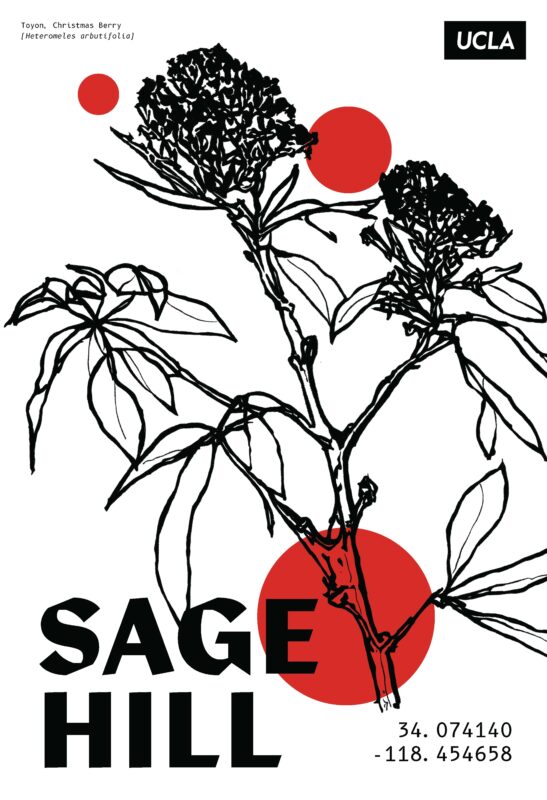
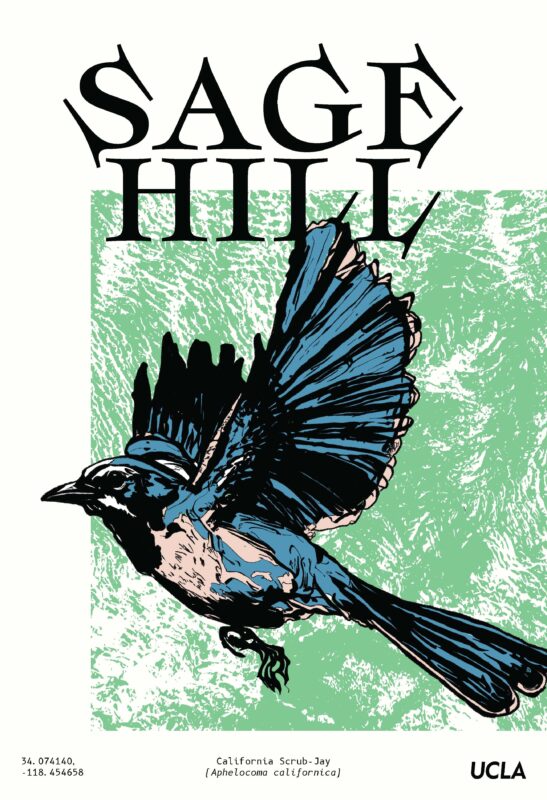
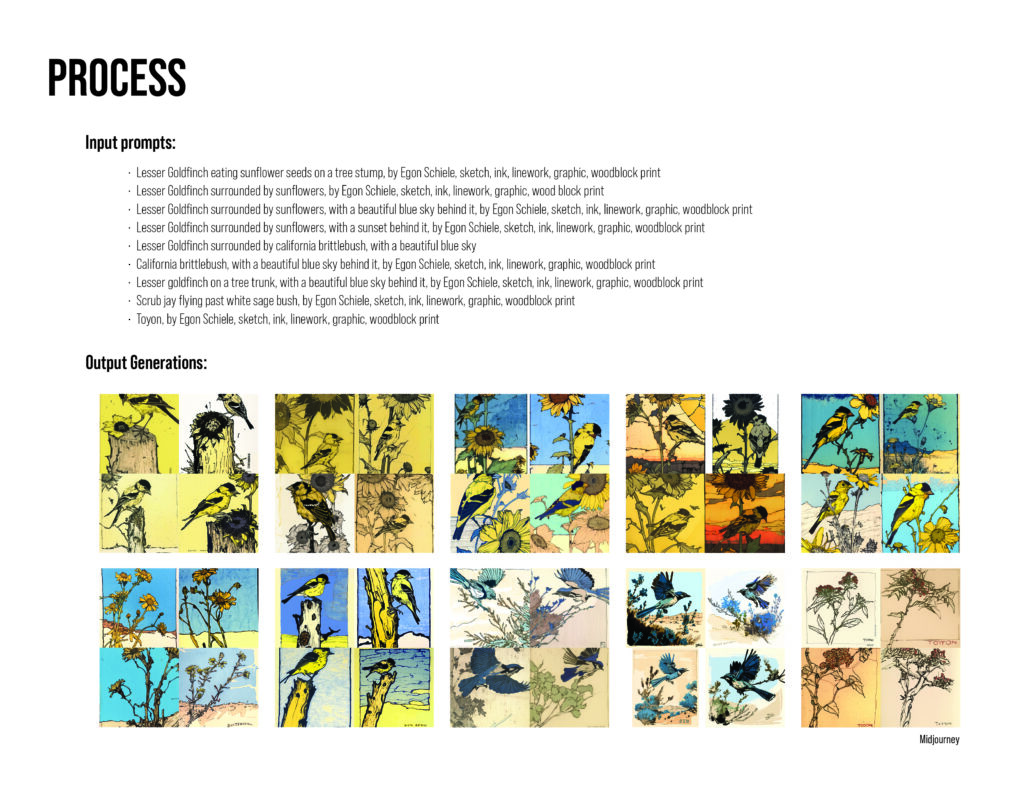
Ownership is a strange thing. It is usually an invisible contract that binds us to a land or object that is only upheld by the moral strength an individual possesses. And it is not usually seen and must be communicated. Who are we to know what belongs to who without being told? This project serves as an exercise in appropriation and ownership.
Using AI-generated images, assets were researched, generated, and recreated by hand, being slightly modified in the process. They were then used to design travel posters for an appropriated land. Like Sage Hill, the process of creating these posters serves as a metaphor for the blight of indigenous land. The AI generative process is inherently a process of appropriation, generating images from a model trained on a dataset of millions of images found on the web. While ownership of a generated image is a hotly contested and ongoing matter, the re-creation and appropriation of such images is less so. Following in the footsteps of what artists such as Roy Lichtenstein and the contemporary art world have been doing for the past century, the re-creation of such images has elevated its status as art and ultimately, as a product of the artist. Like UCLA and other land grant universities, an acknowledgment has been made about the origin of process and appropriation from others, however…ownership ultimately remains in those that have “officially” claimed it.
The re-created images, although slightly modified, maintain artifacts of distortion. Like all seized indigenous land before it, it may “belong” to others with official titles and contracts, yet a piece of inhabitance will always remain…a distortion or a remnant.
34°04’25.4”N,118°27’17.8”W:Narnia, SageHill, Tongva Land
a series of three typefaces inspired by the different voices of Sage Hill, by Tacy Prins Woodlief
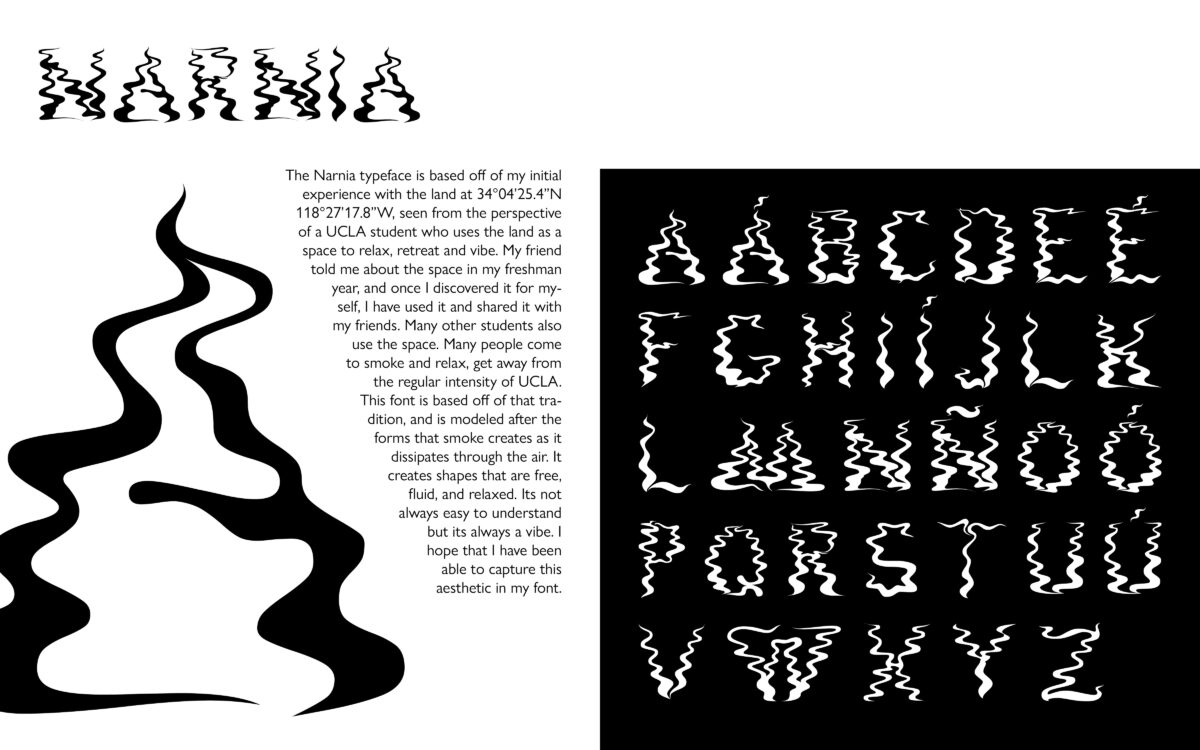
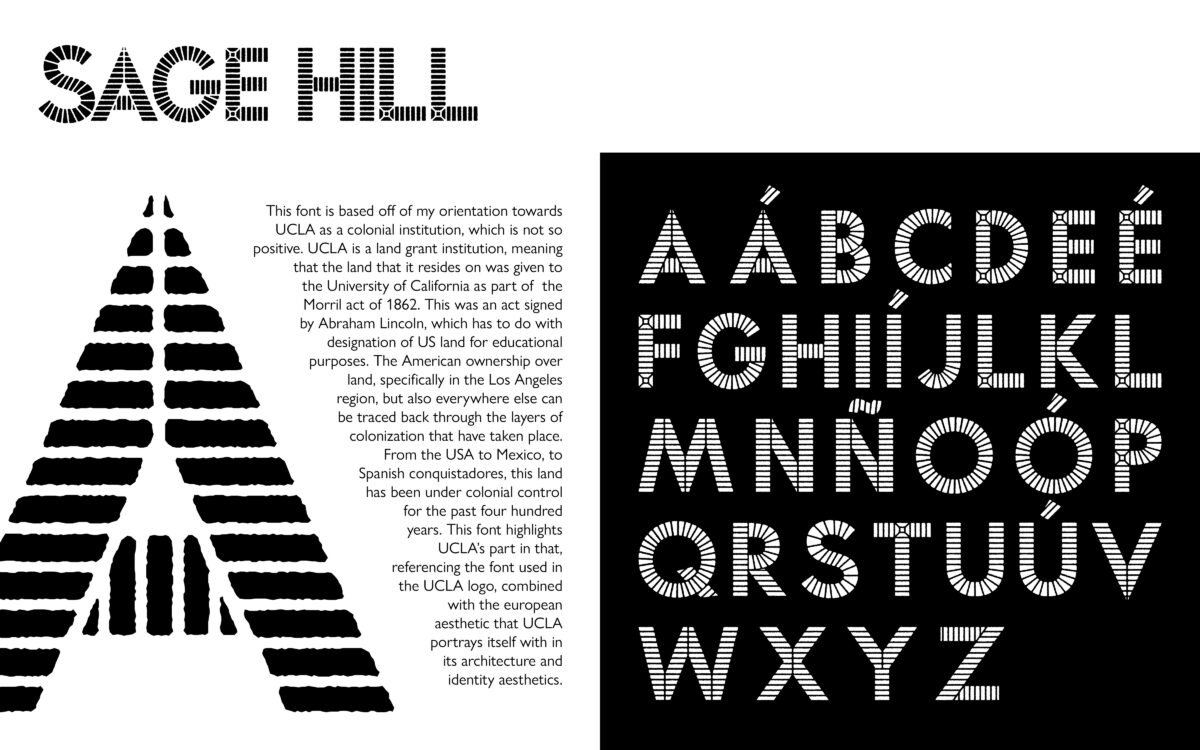
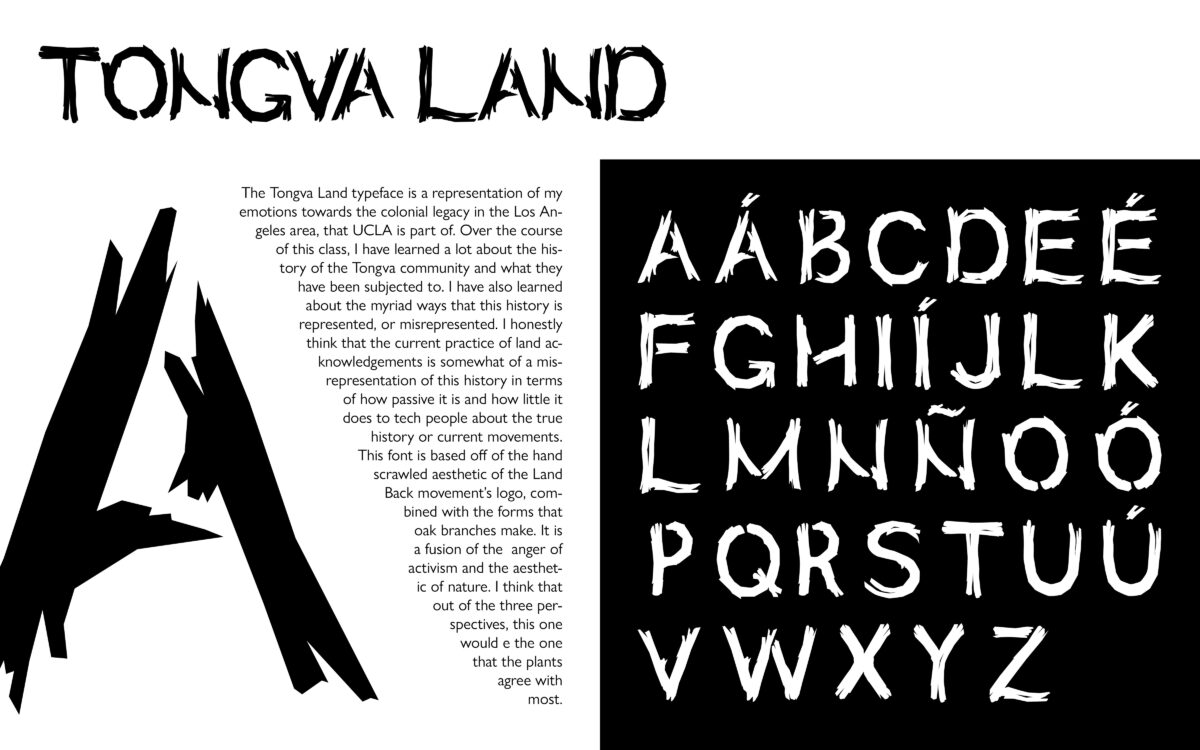
I had the idea for this project last summer, when I was thinking about what I wanted to make for this class. I was thinking about the land that we would be studying and I realized that I could idenify a multitude of different perspectives on the land, from my own perspective as a student, to UCLA’s perspective as an institution, to the plants and animals perspectice as inhab-itants, to the native tonga communitys perspective as original stewards. These perspectives differ intesely from eacho-ther and I was super interested in examining the differences between these perspectives and the ways that they overlap and influence each other. I initially wanted to make zines to showcase each of these perspectives, but eventually | became more interested in the voices that I heard in my understandings of each orientation.
I decided to make fonts in order to have a medium to express my own thoughts on each side of the land, and to discuss the way that my perspective has changed over the years that I have known about the land.
Sage Hill: An Audio Experience
a sound experience of Sage Hill, by Kai Levey
Sage Hill Brand Design
a brand identity for Sage Hill and supporting assets, by Ashley Ong
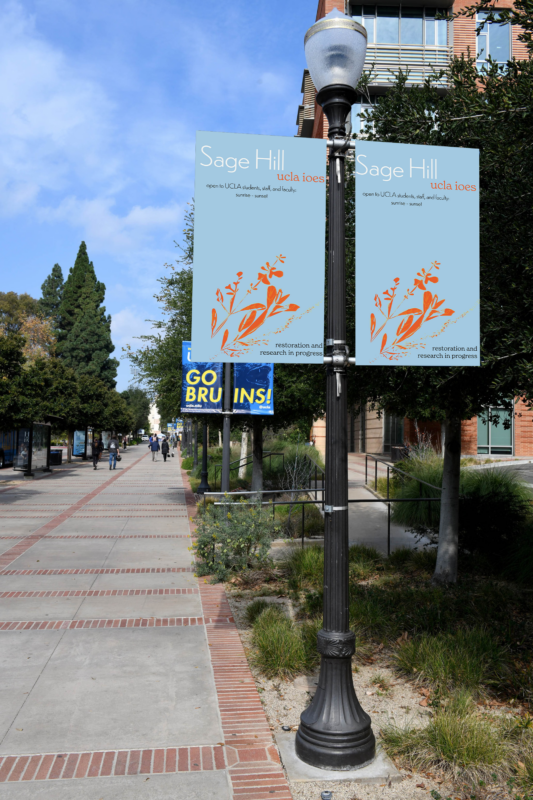
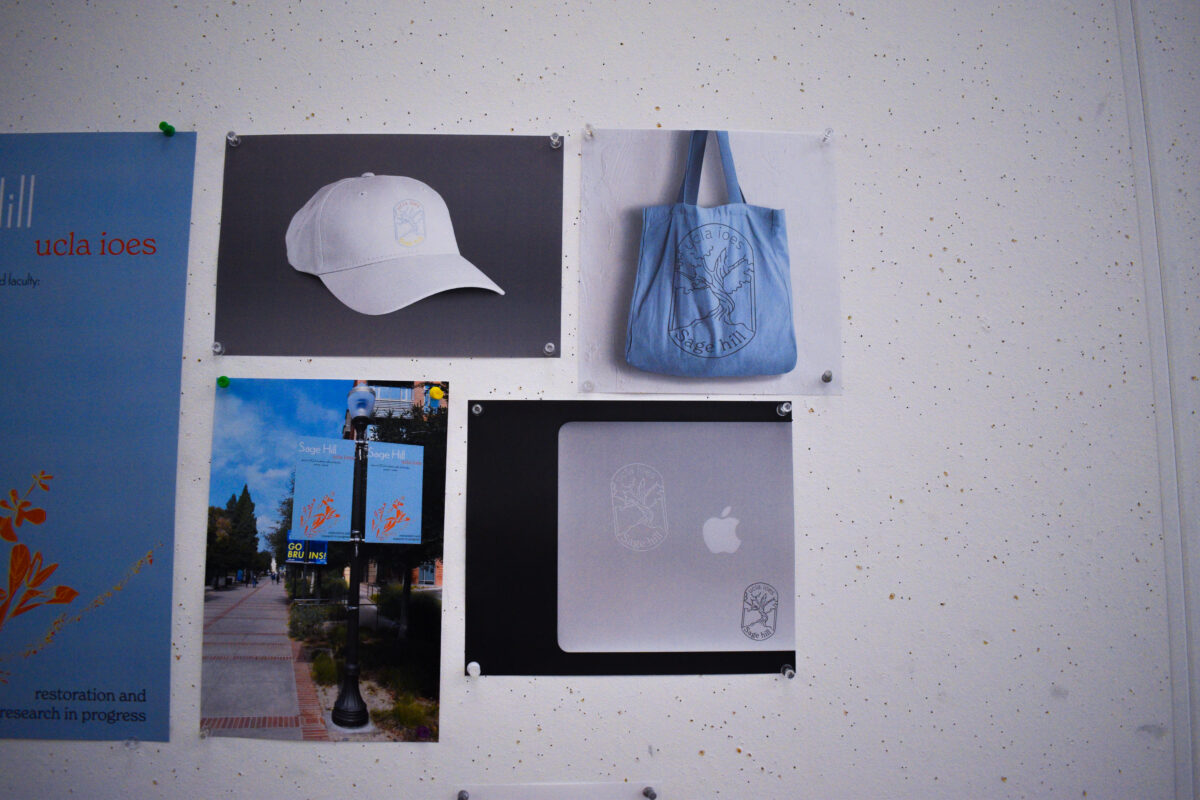
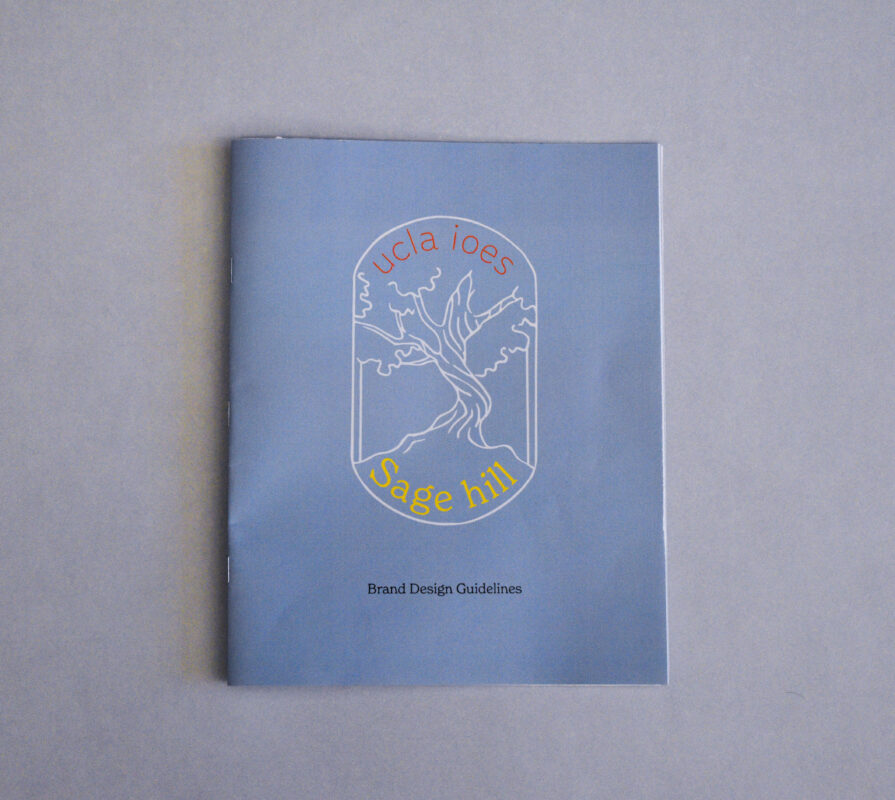
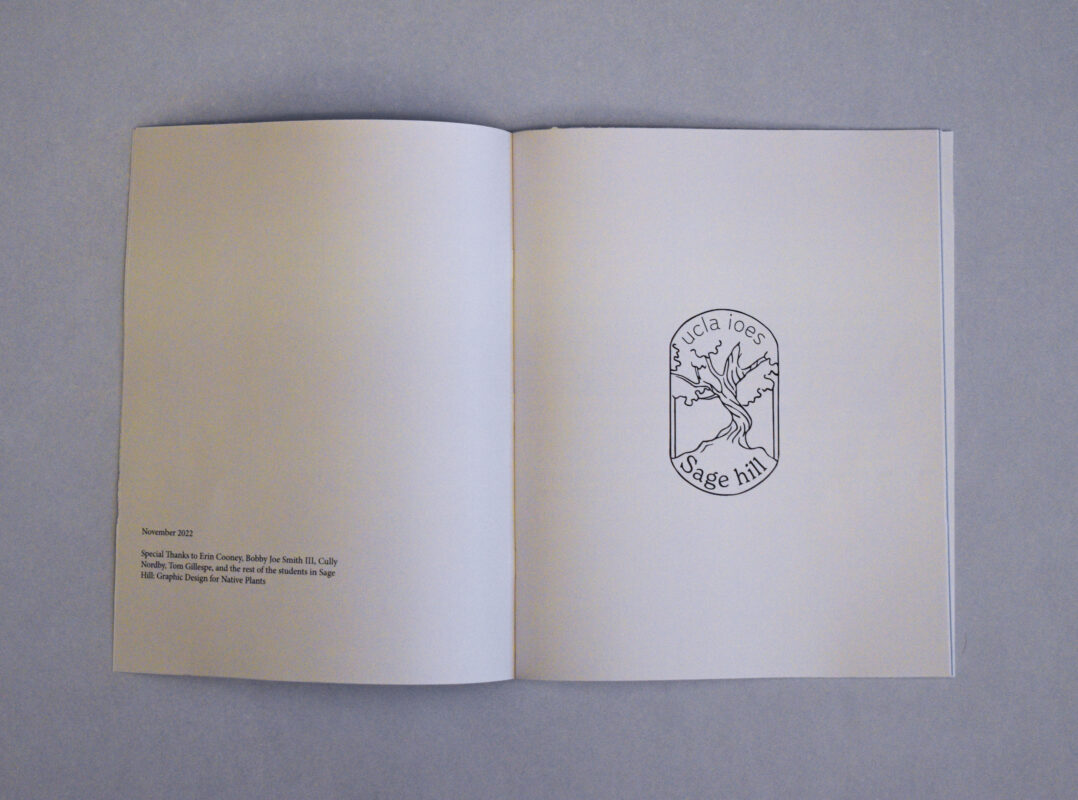
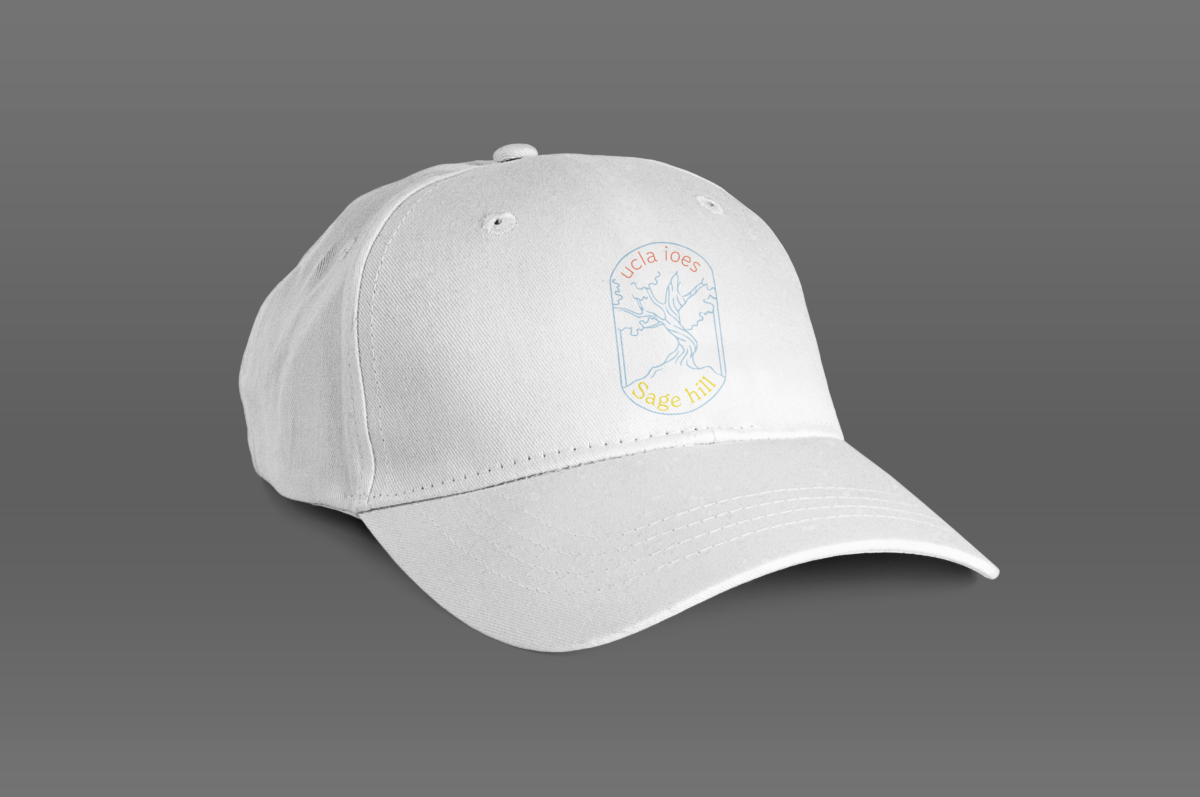
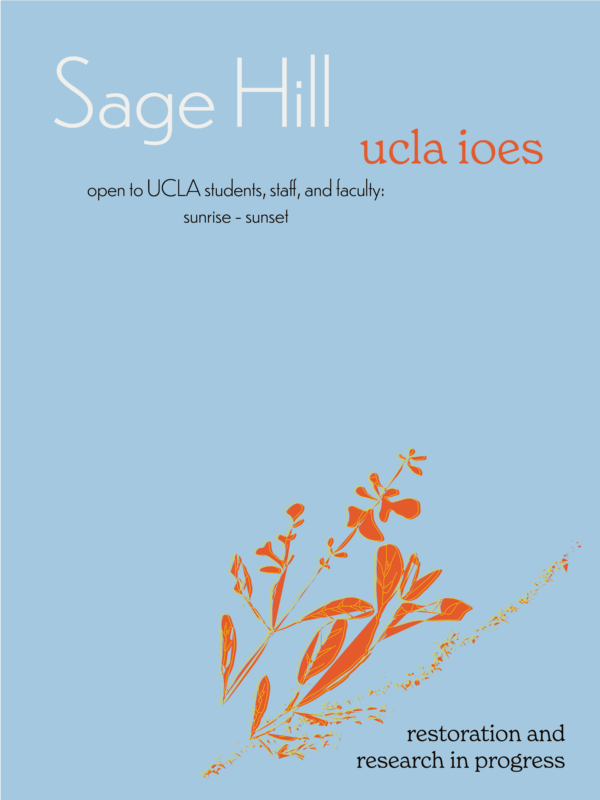
With this project, I wanted to explore design research and researching native plants, lands and peoples. I created a brand design that includes a logo, color palette, font choices, and materials that include the brand design all put together in a brand design guidebook. I dove deeper into the history of the land and the people who lived there, trying to honor them and include my research into my brand design. I also learned a lot about Sage Hill and its past projects by the Institute of the Environment & Sustainability and drew inspiration from previous scientific projects. Lastly, I was inspired by the plants that are at Sage Hill and drew inspiration from nature and landscape.
Between Our Destruction
a video animation inspired by and using sound recorded onsite at Sage Hill, by Henry Barbera
This piece is titled, Between Our Destruction. When I first began this project, I had a very different vision of the final product – I thought I was making a piece entirely focused on noise pollution. Over the course of my creative process I’ve been driven in a different direction. I spent numerous hours sitting, drawing, writing, walking, climbing, and recording audio around Sage Hill. I was usually alone or accompanied by my good friend Ayush. Together, Ayush and I wrote a poem about the space. Although we primarily focused on the noises present, our poem transcended being a simple commentary on noise pollution. It is also about our role in this preserved, natural atmosphere. We hoped to capture the novelty of being somewhere so old, next to somewhere so new. After several poetic iterations and lots of shared imagination, we decided that we had found our best poetic symphony.
Wanting to make our words more memorable, I took the time to create some visual illustrations. Inspired by children’s books, and the age of black and white images, I modeled, textured, rigged, and animated a heavily iconographic medium to house our ideas and the life of the sounds that were recorded on-site.
Textures of Sage Hill
a poster project exploring the textures of Sage Hill, by Collette Lee
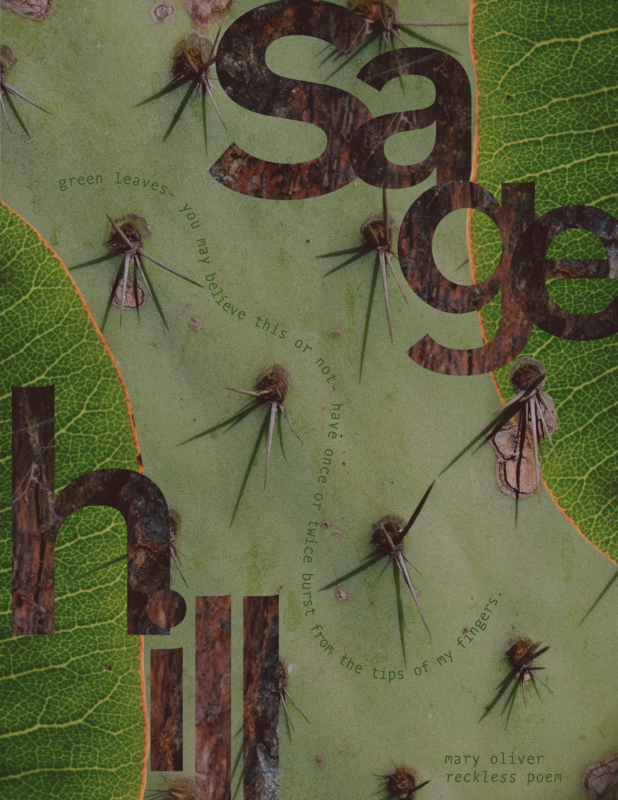
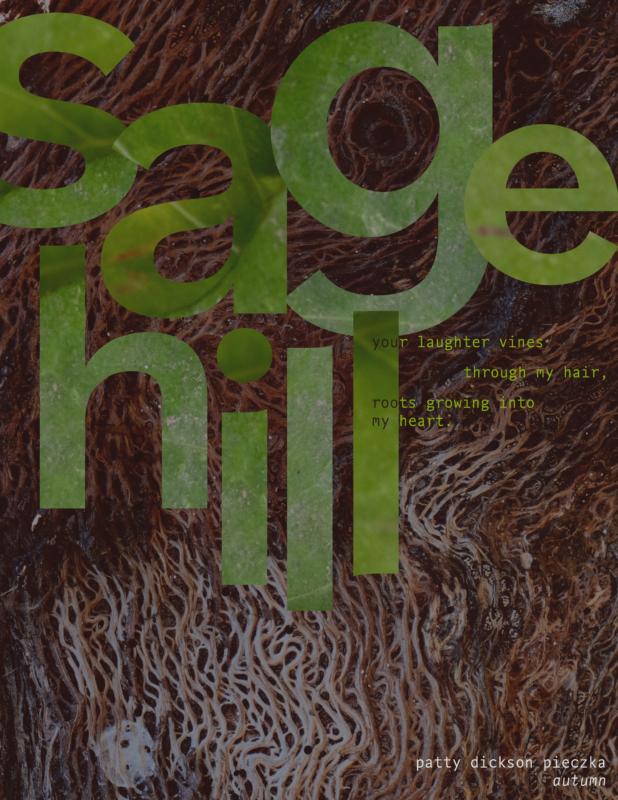
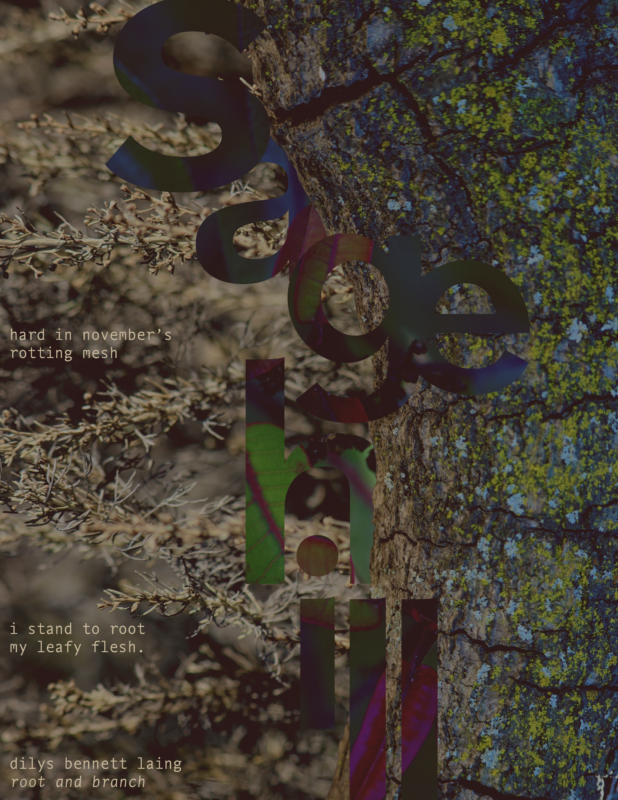
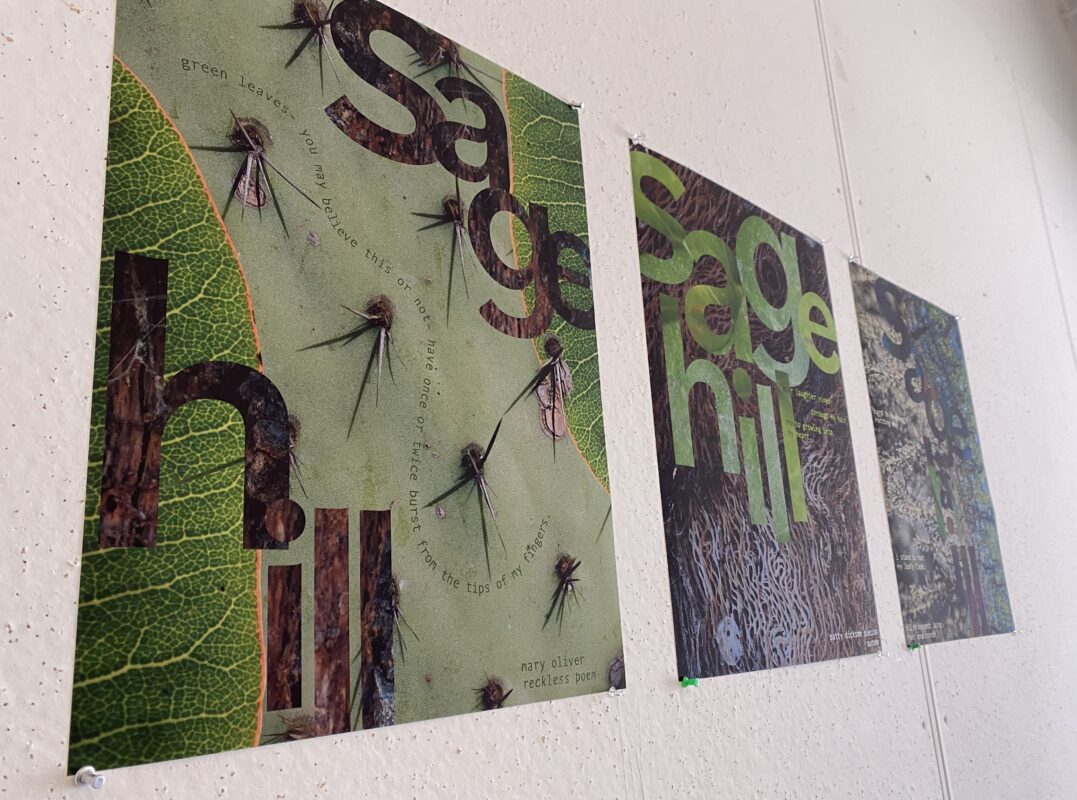
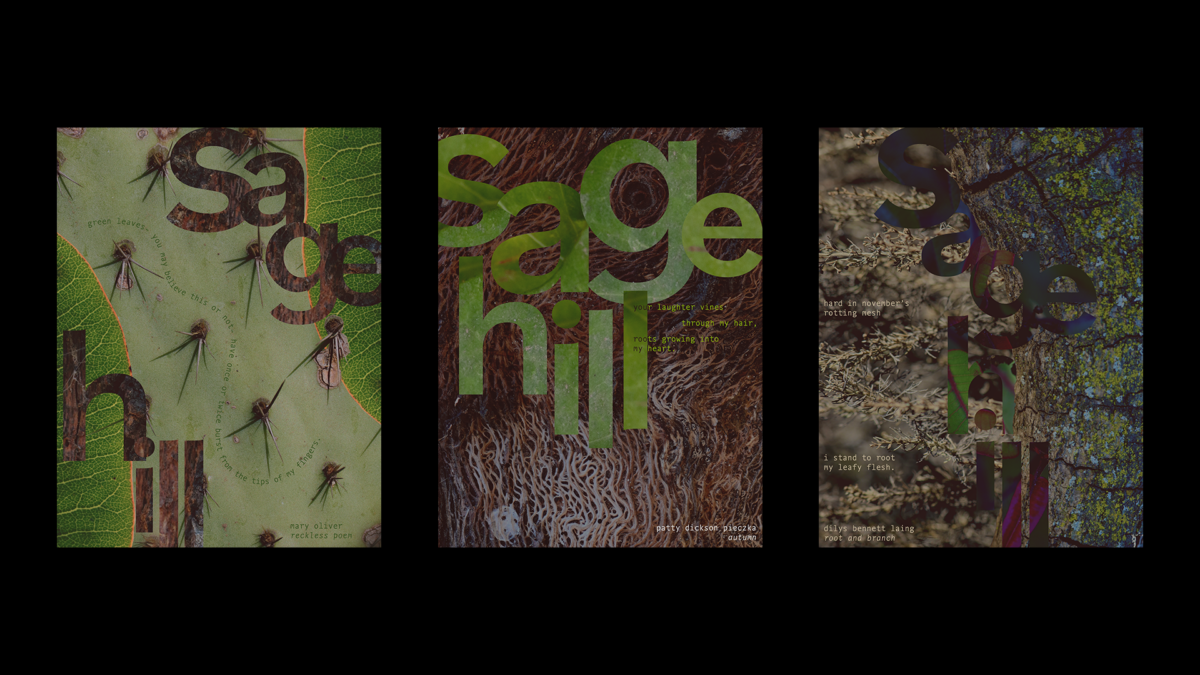
Textures of Sage Hill is a poster series consisting of three promotional posters intended to be displayed around campus to raise awareness and spark intrigue about Sage Hill. I wanted to foster interest for the habitat in a unique and artistic way, with the goal of drawing people in through unconventional imagery.
Promotional assets for national parks tend to showcase nature on a grand scale. I wanted to subvert these expectations of what you would see in a nature poster and instead really zoom in to the macro level and focus on the intricacies of texture.
Through photo collage and typography, I aimed to defamiliarize Sage Hill and nature as a whole for the spectator. I think this creates an air of mystery that really meshes with the spirit of Sage Hill/Narnia and its history as an elusive hideaway spot for students over the years.
I also incorporated nature poetry into the posters, with each excerpt coinciding with the photography featured on the poster. I chose poems that both resonated with me personally and that I felt matched the visual concept of each poster.

